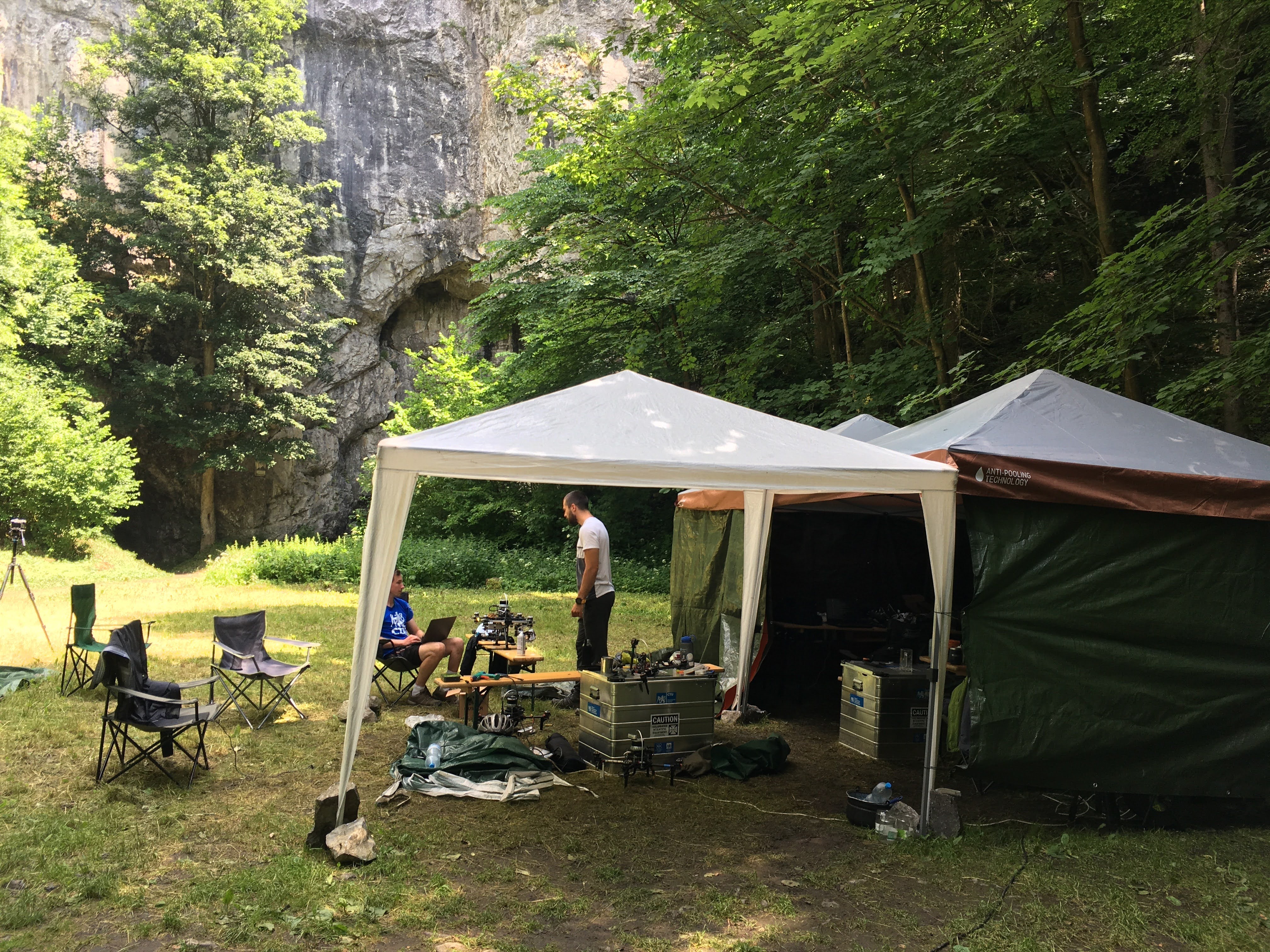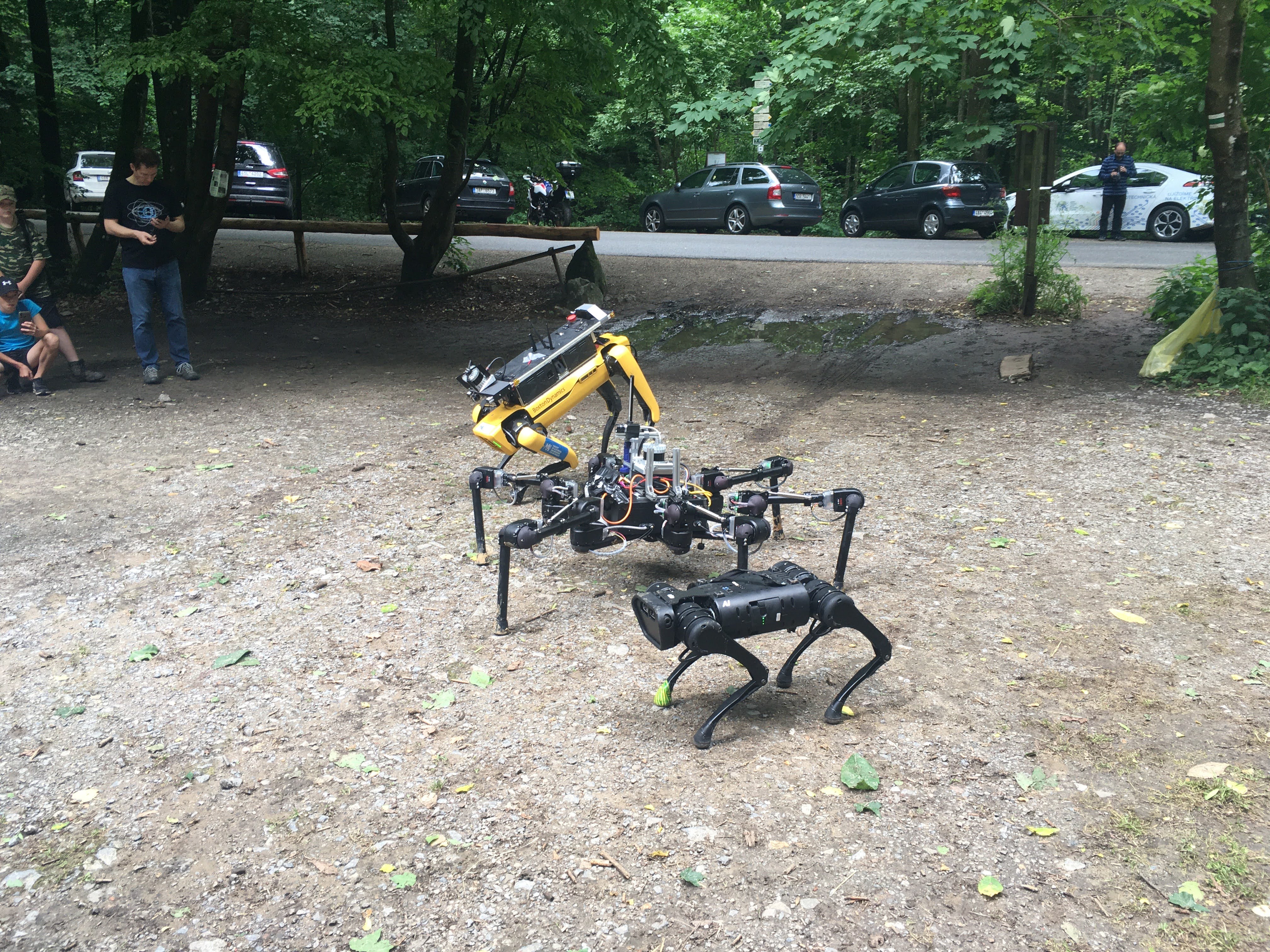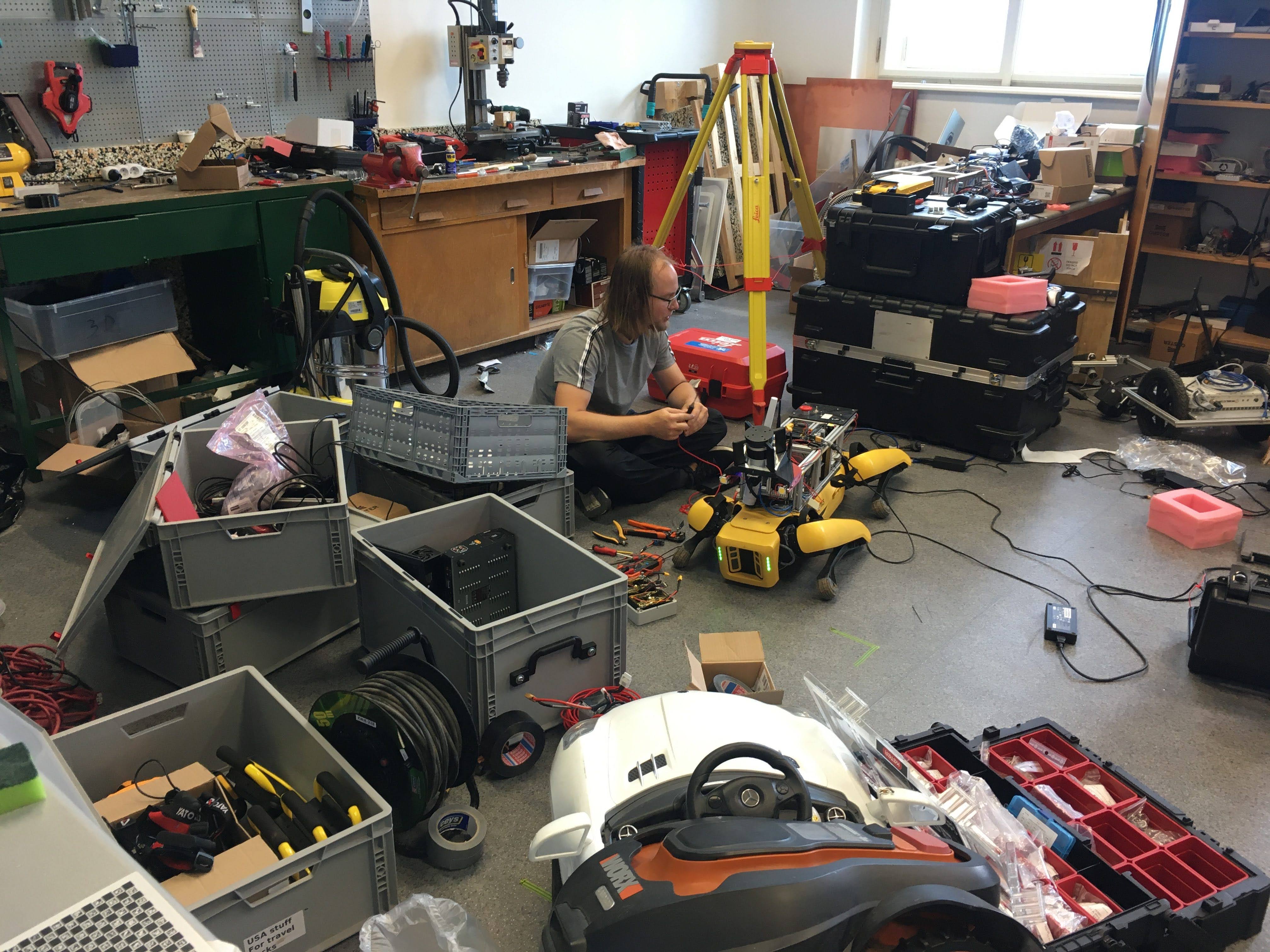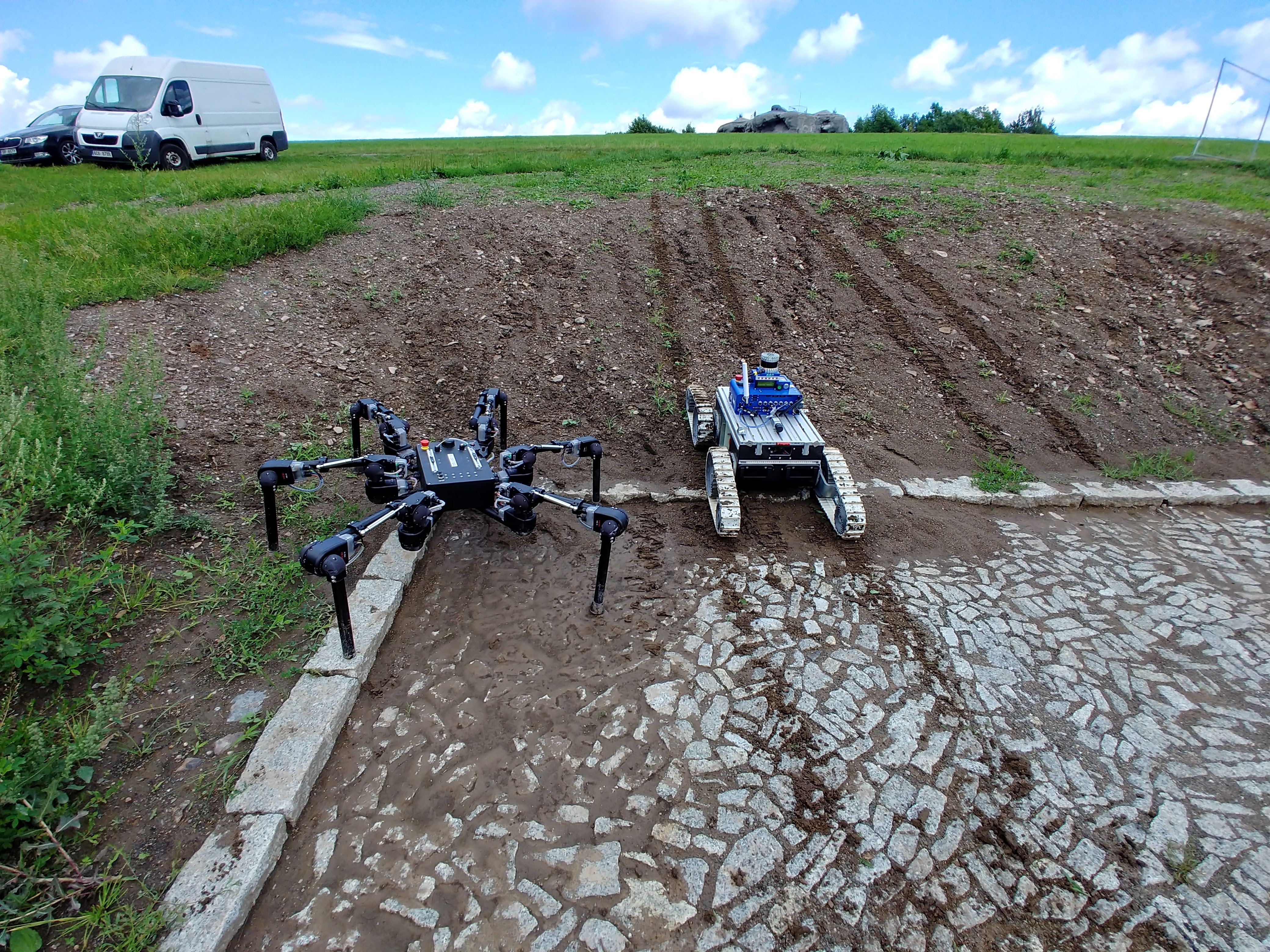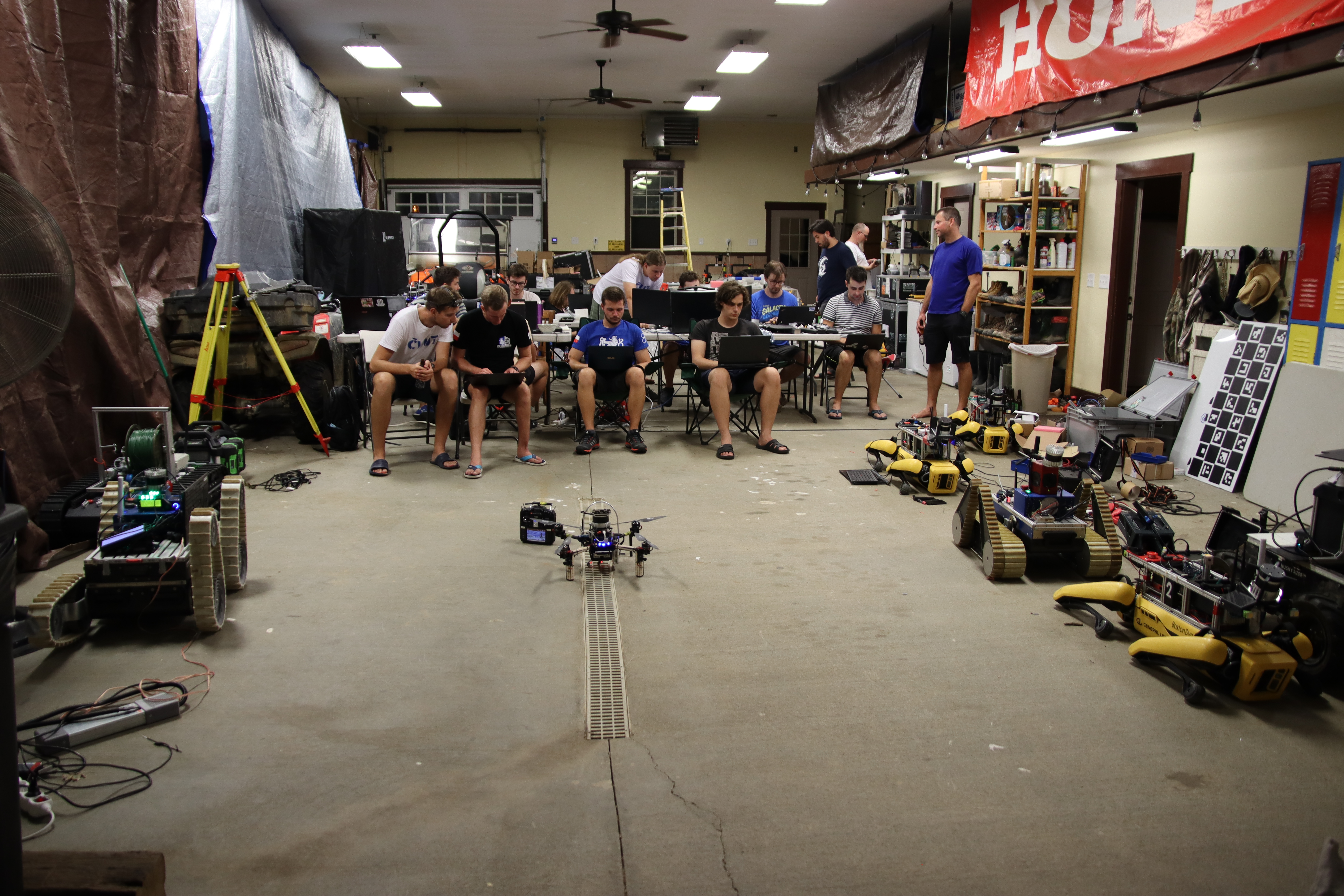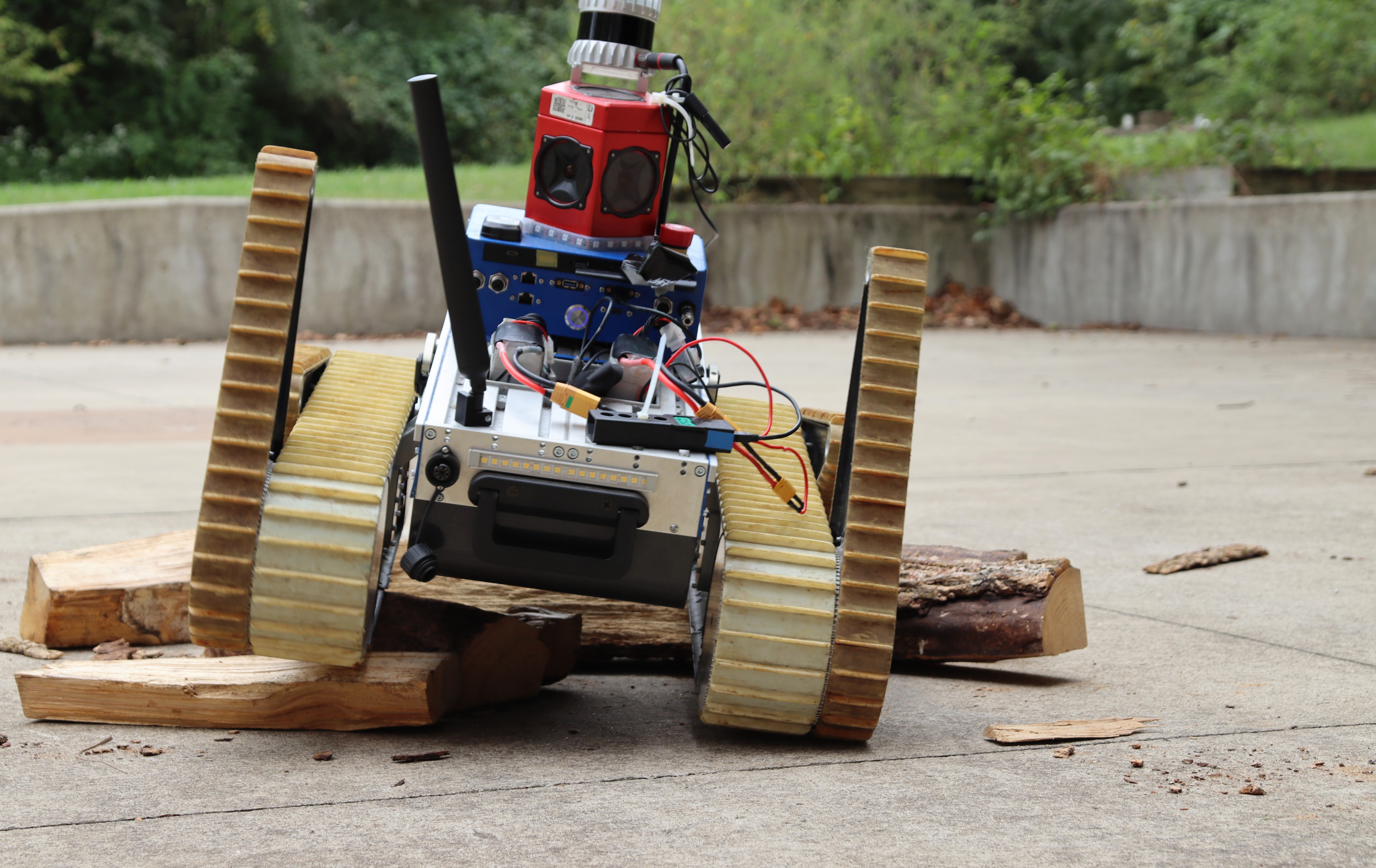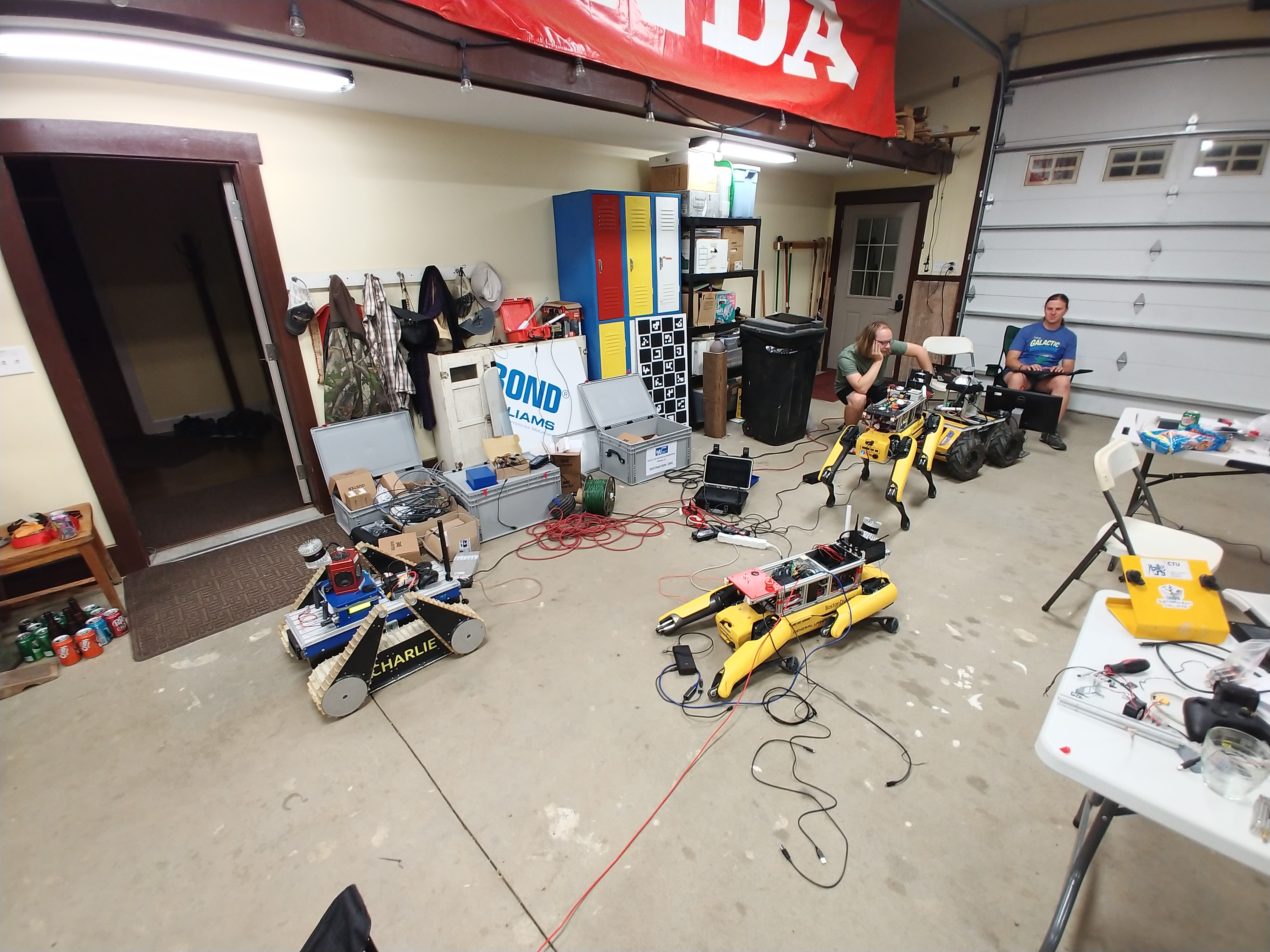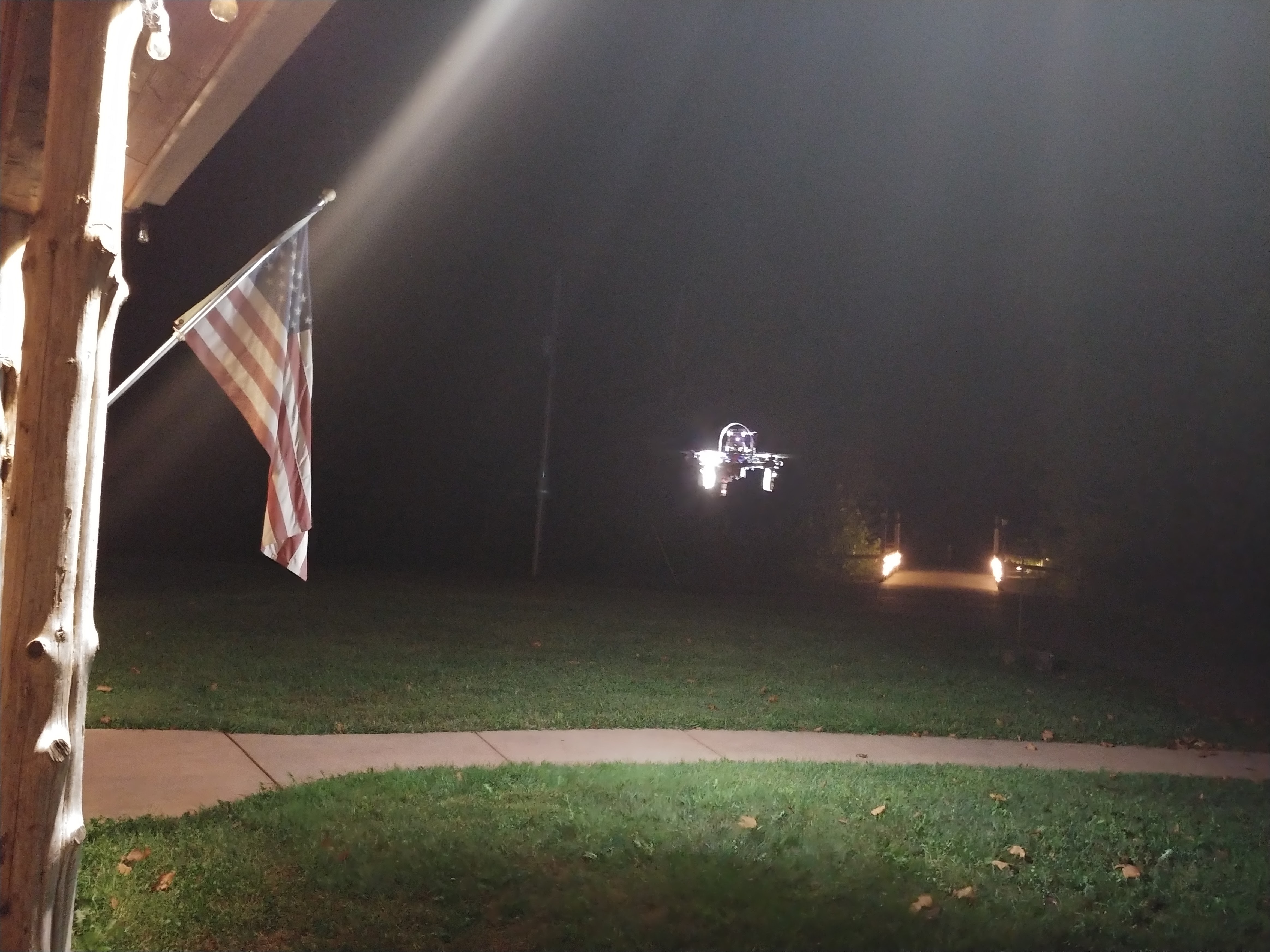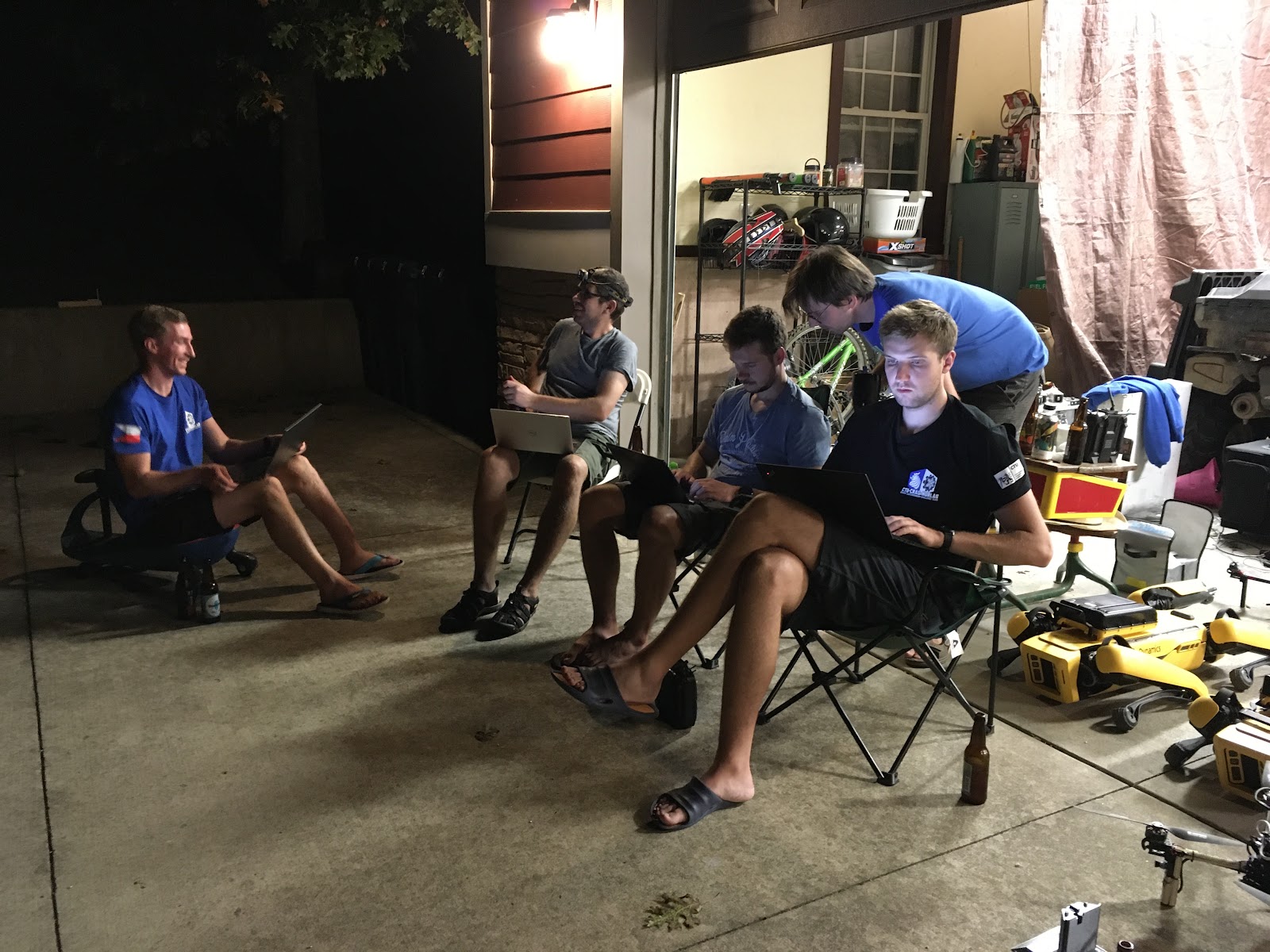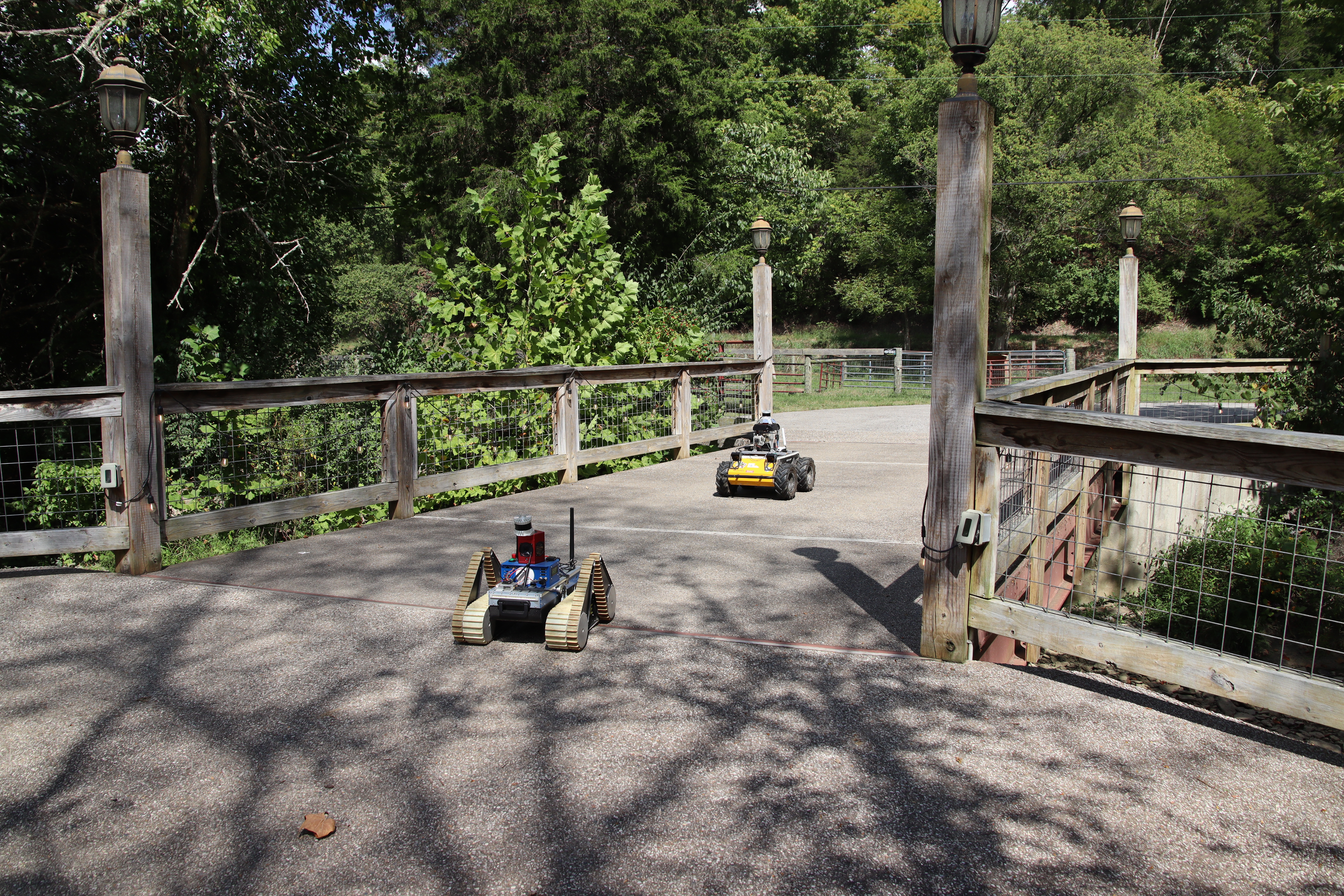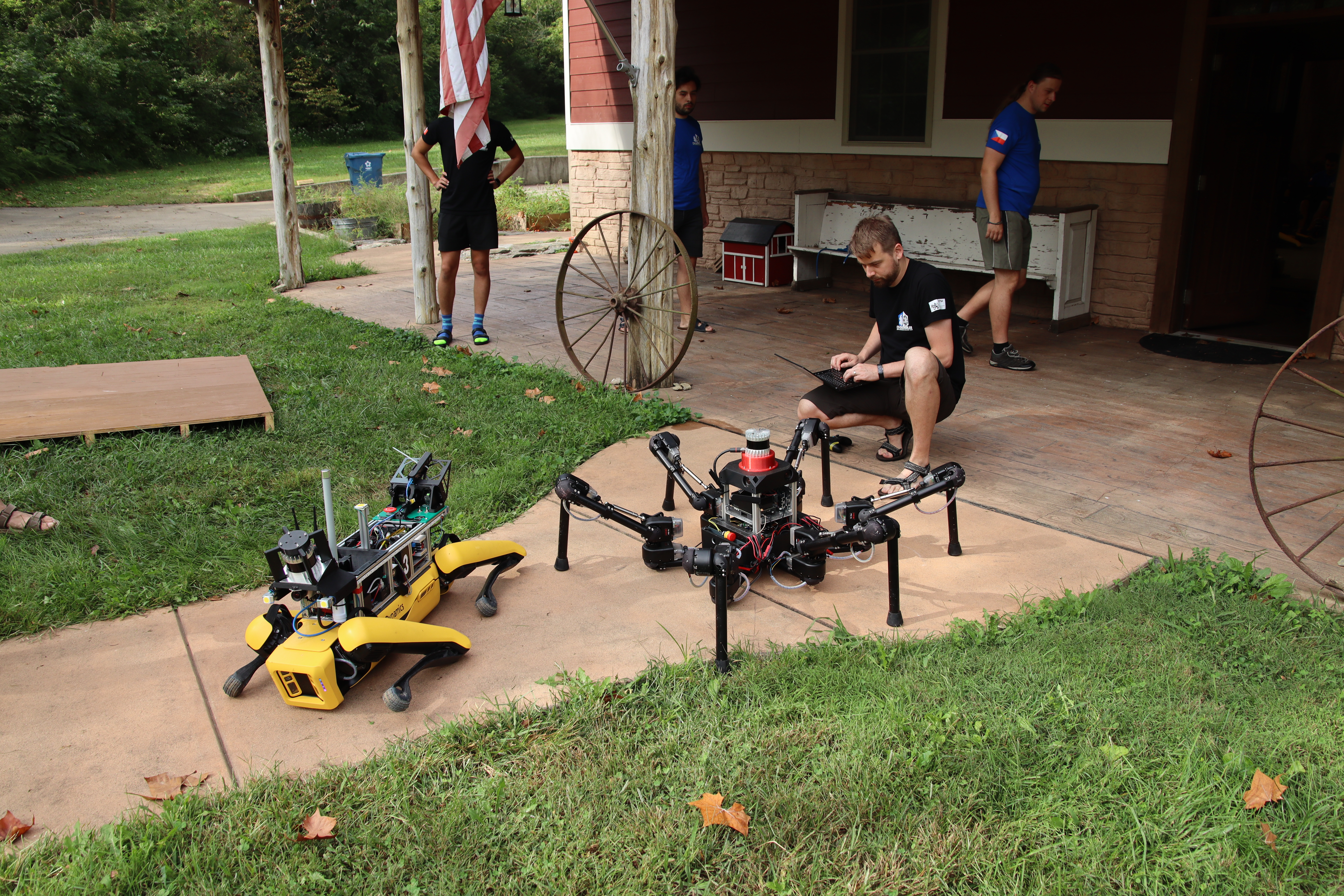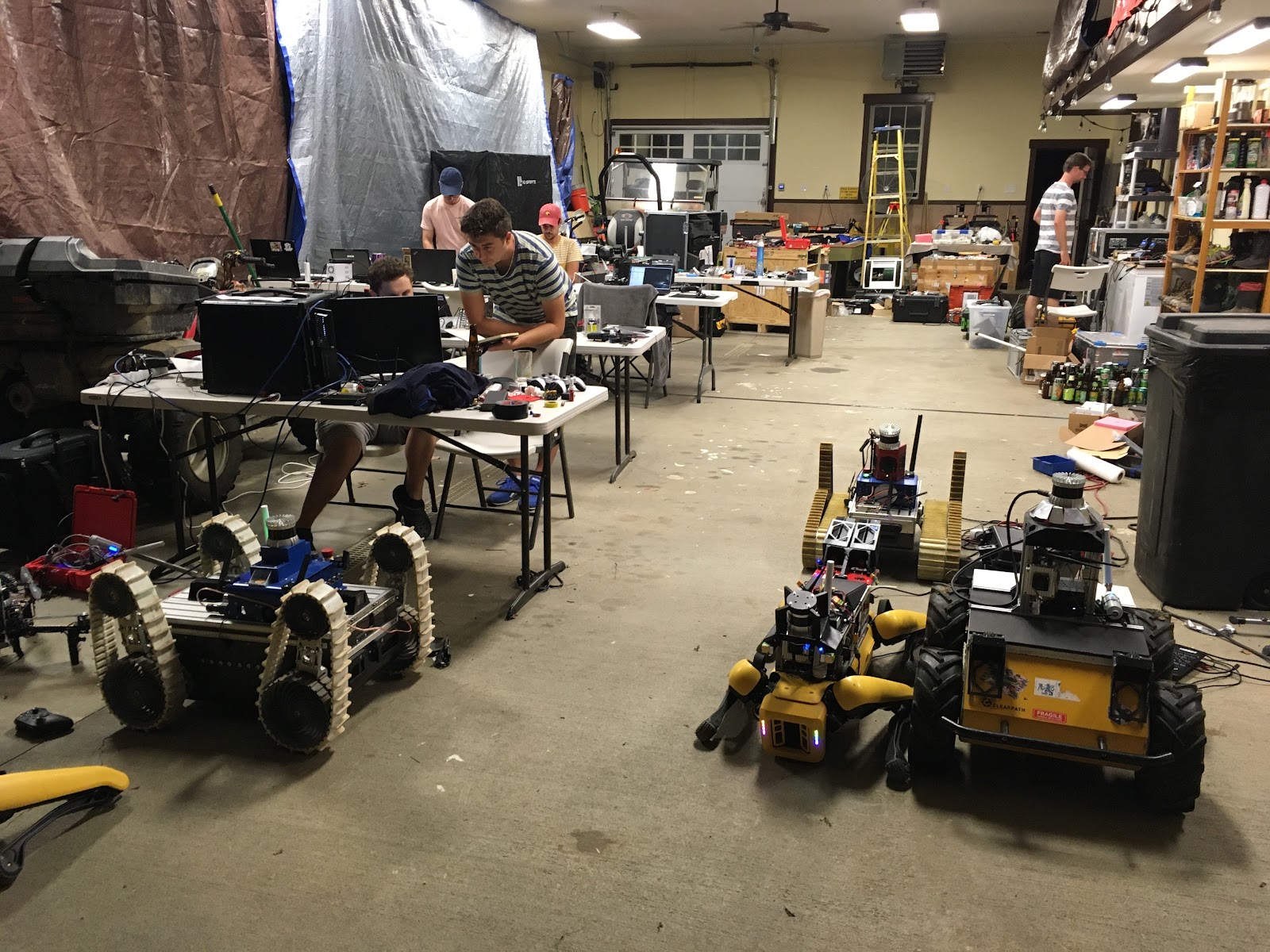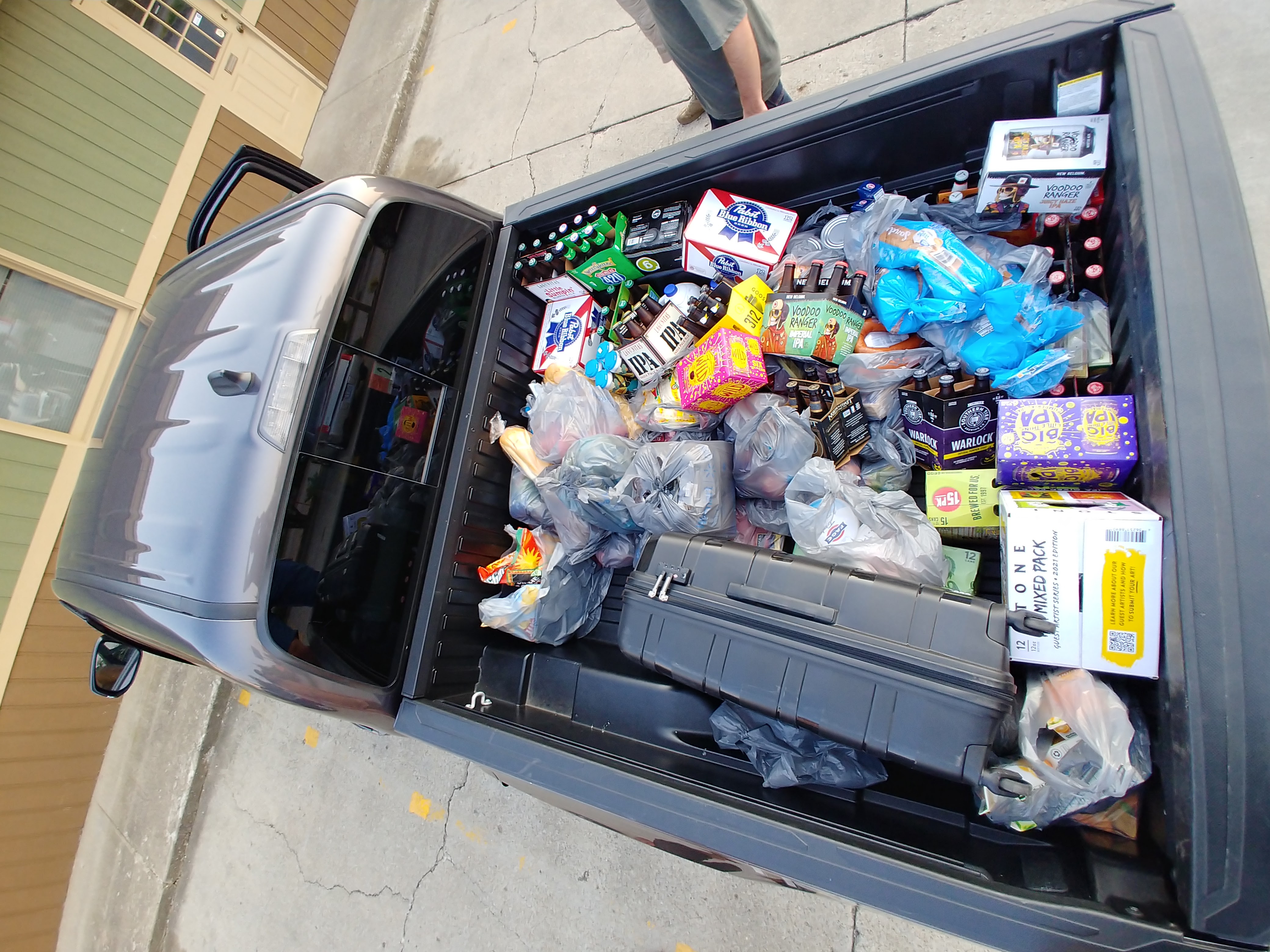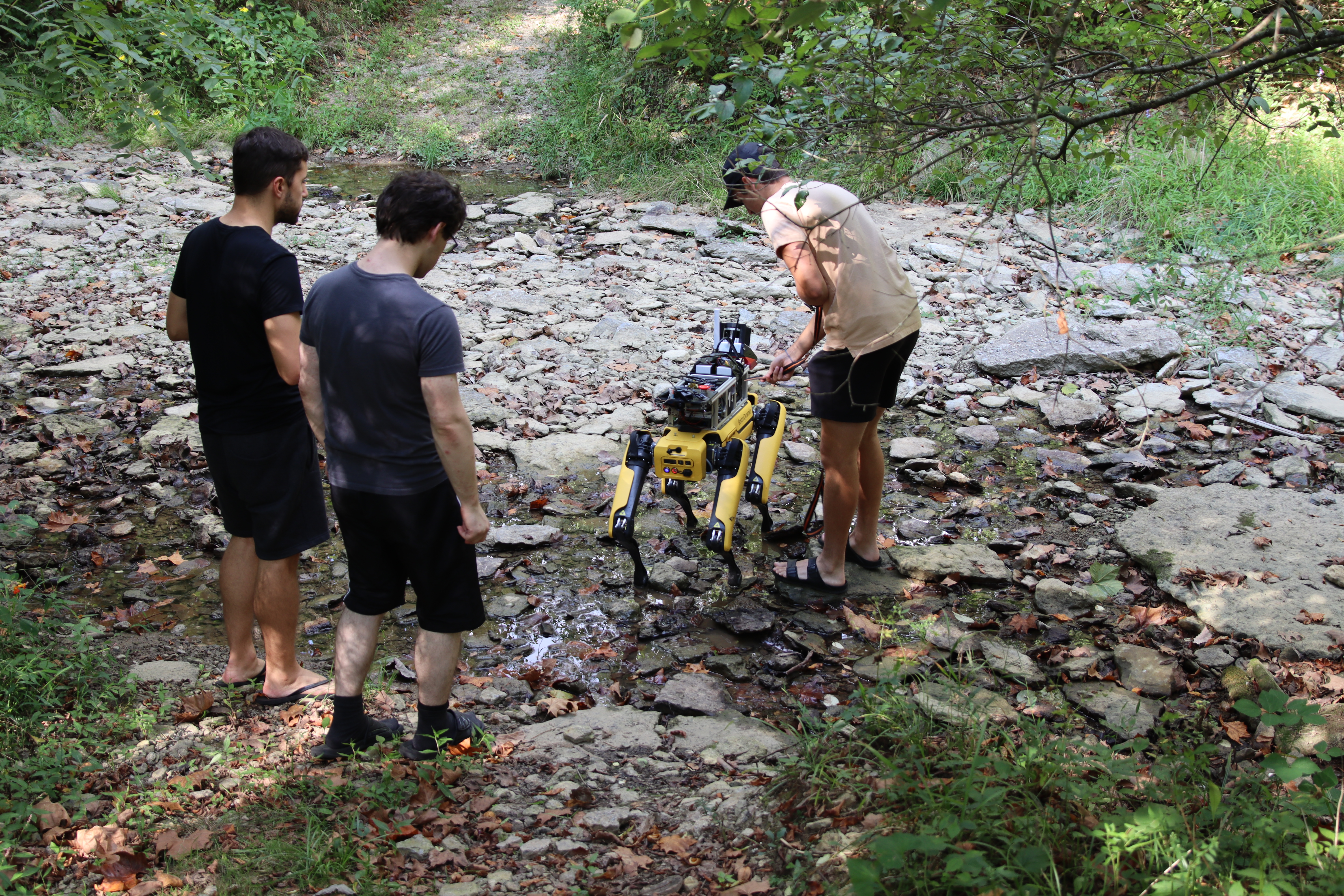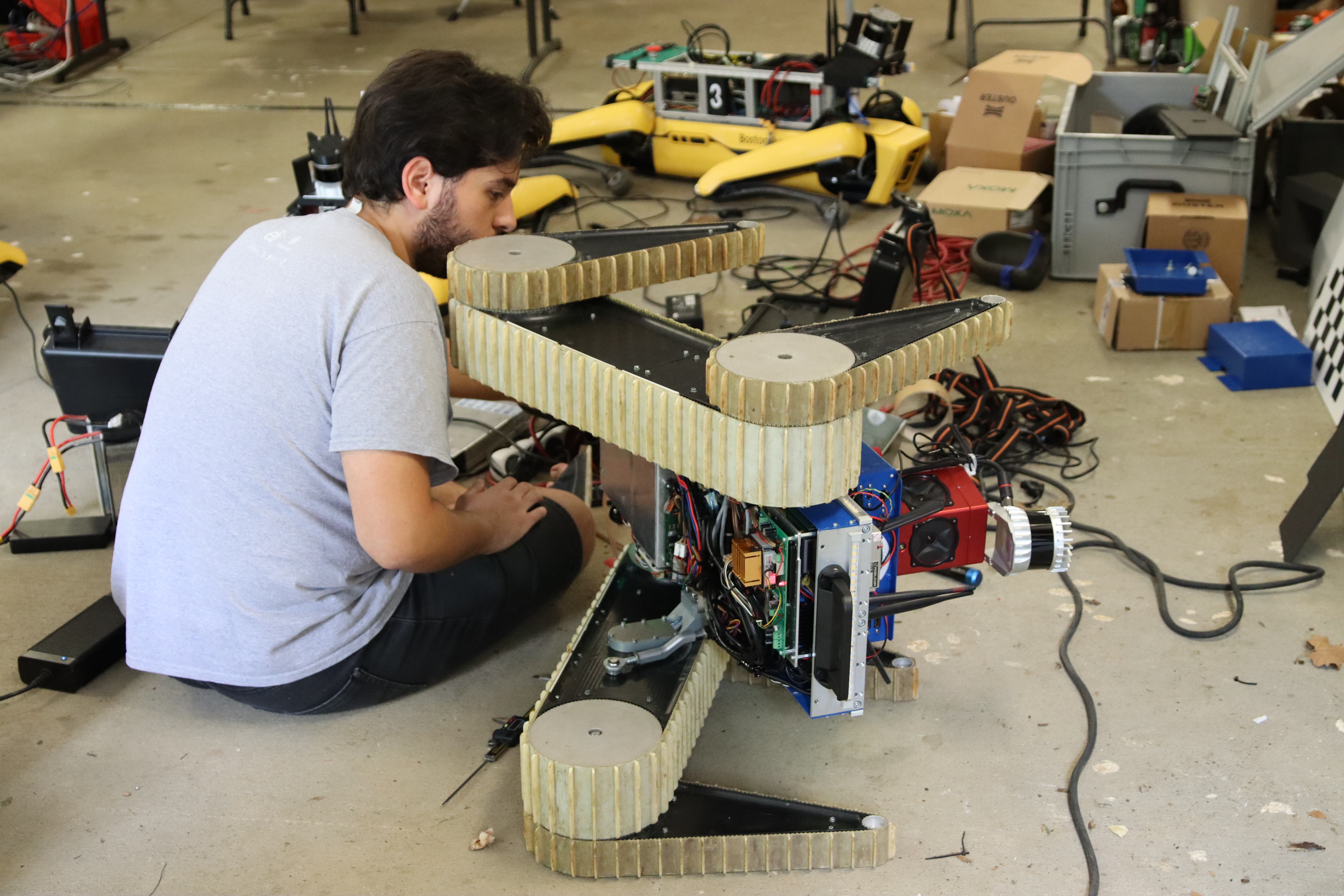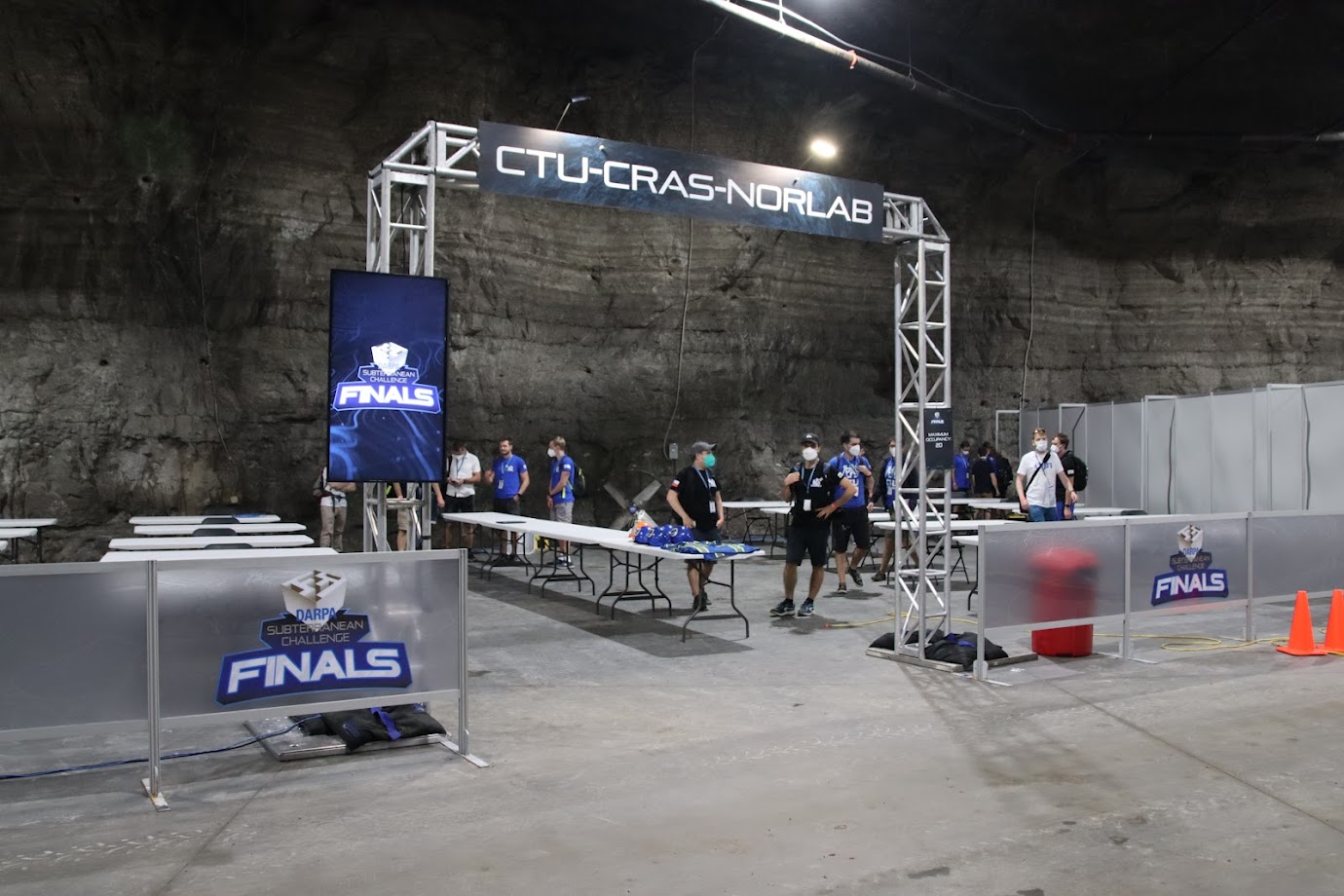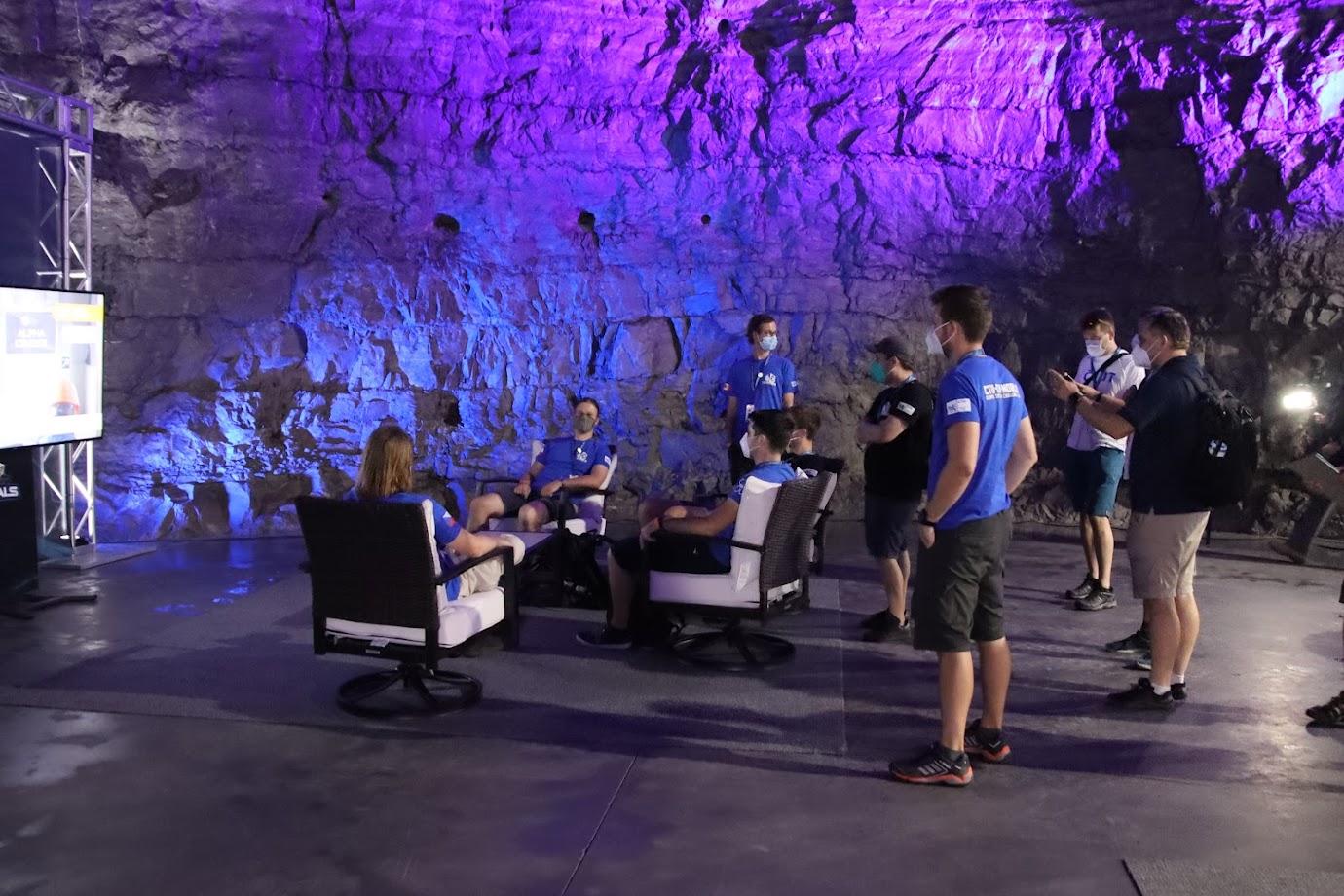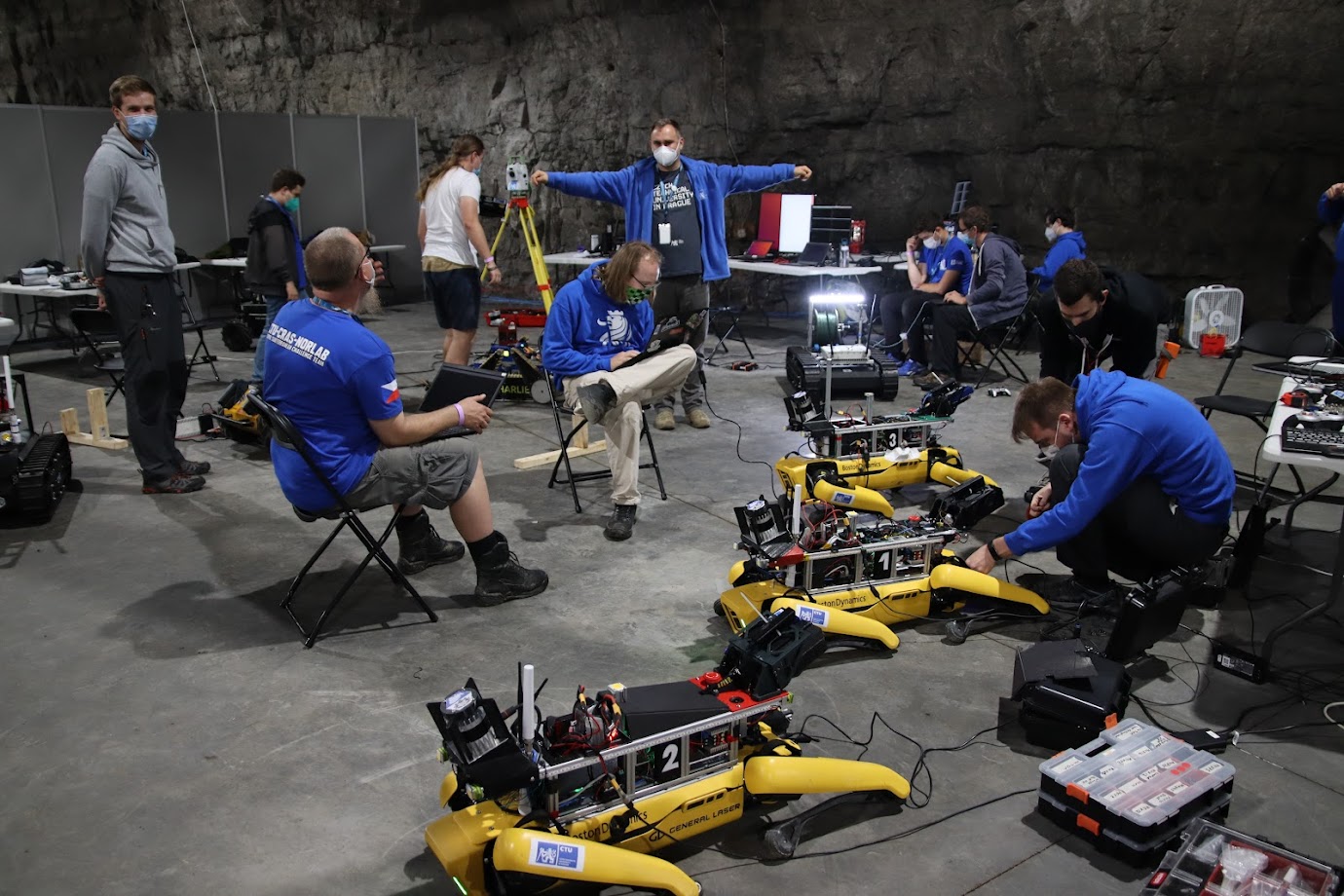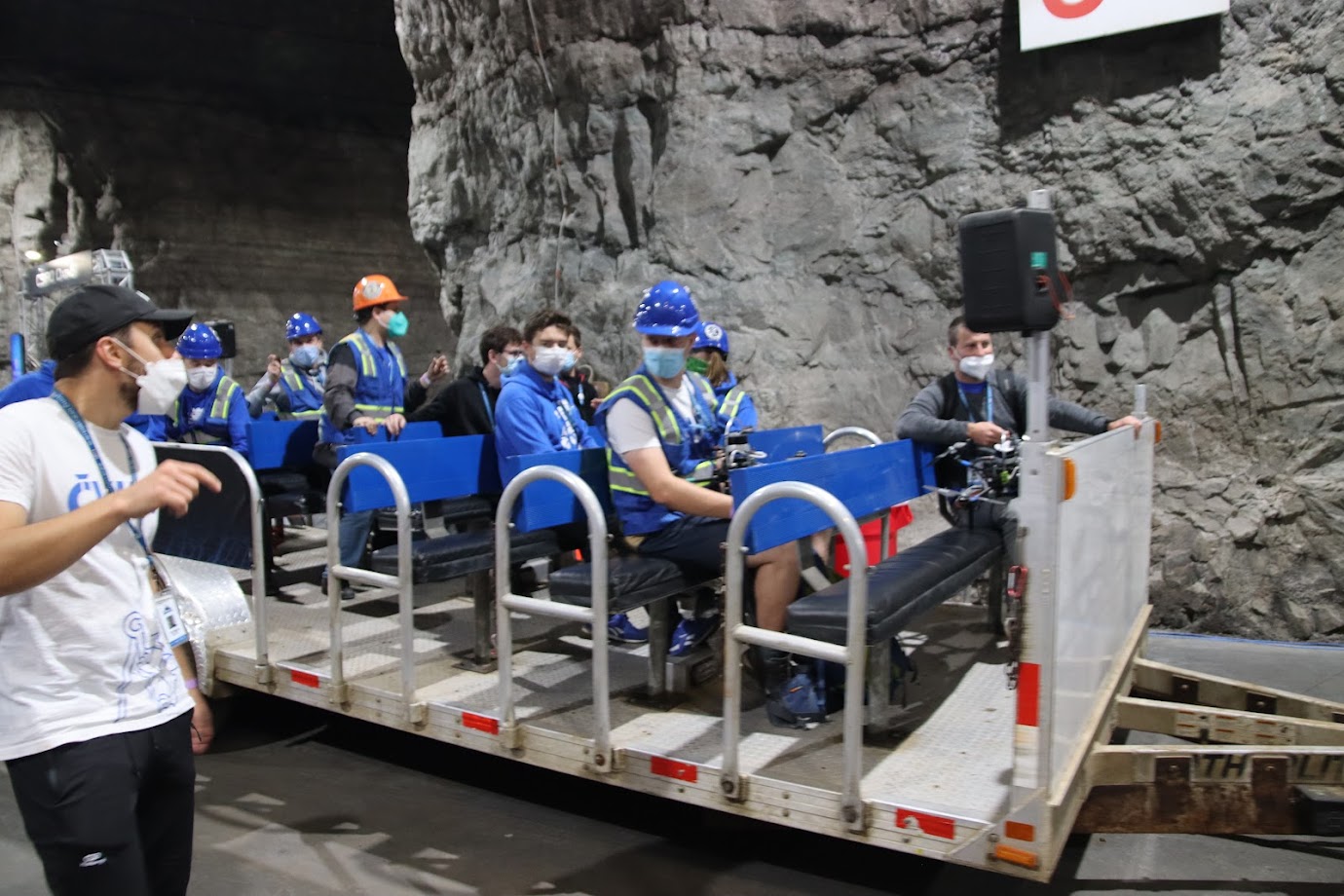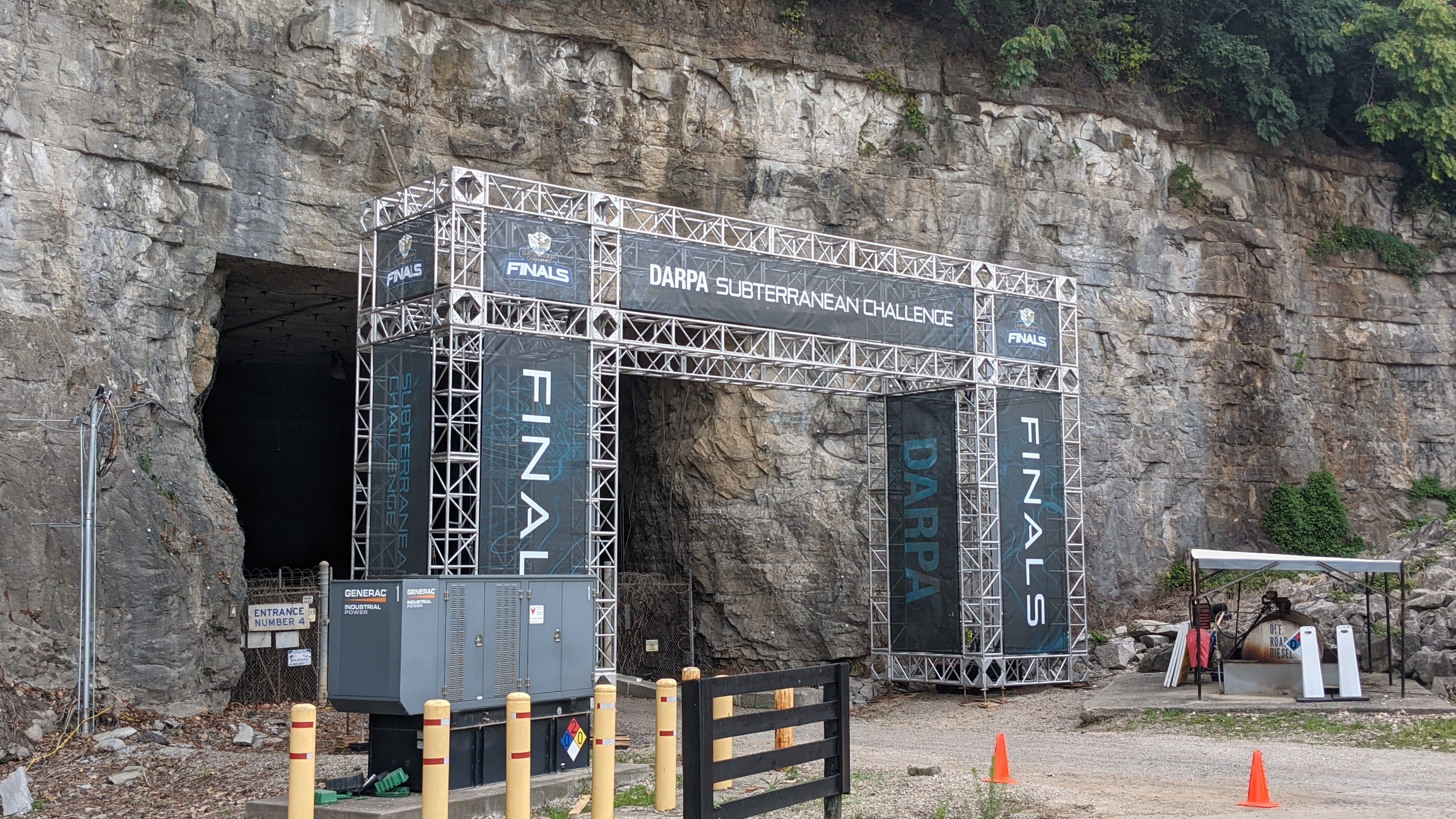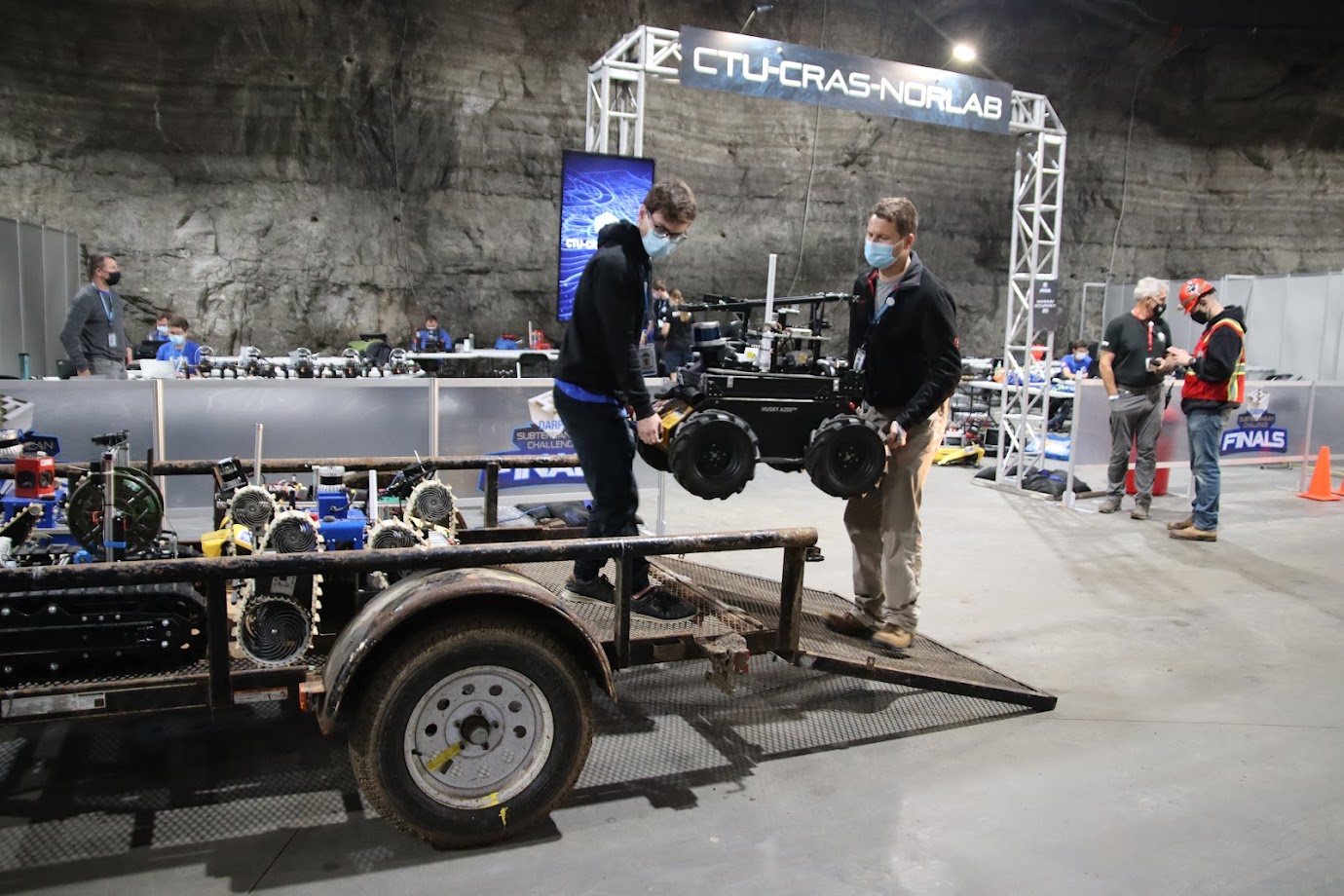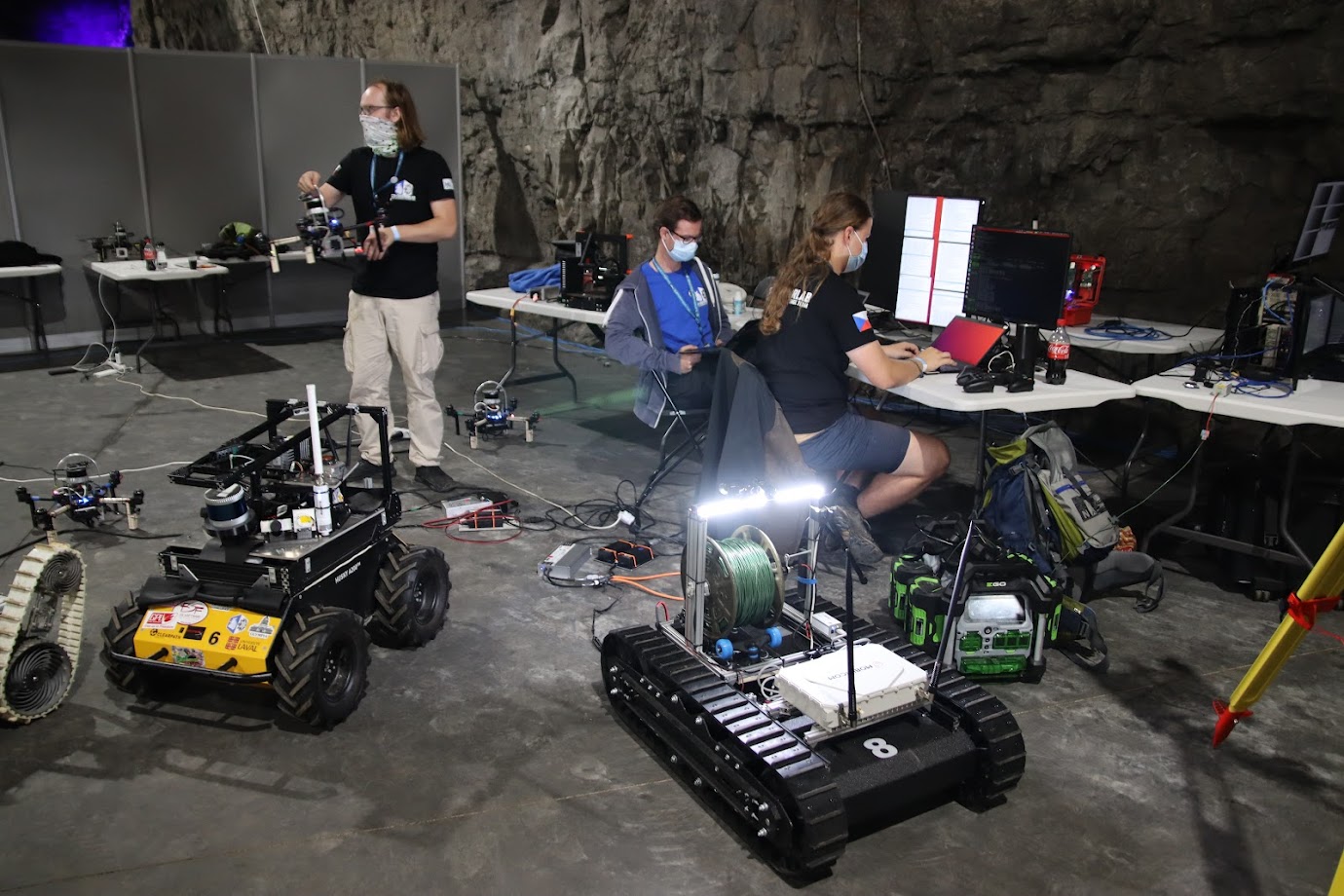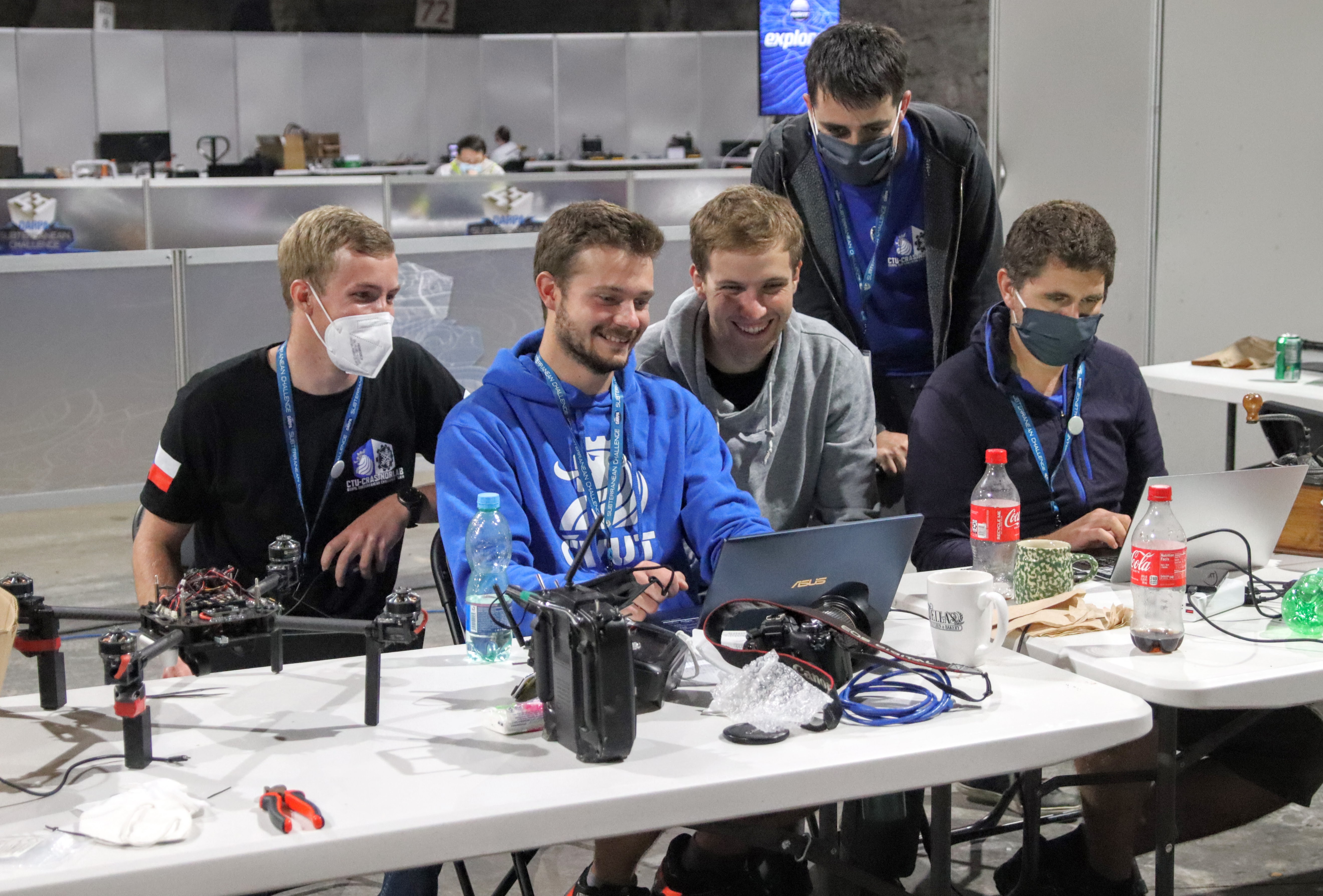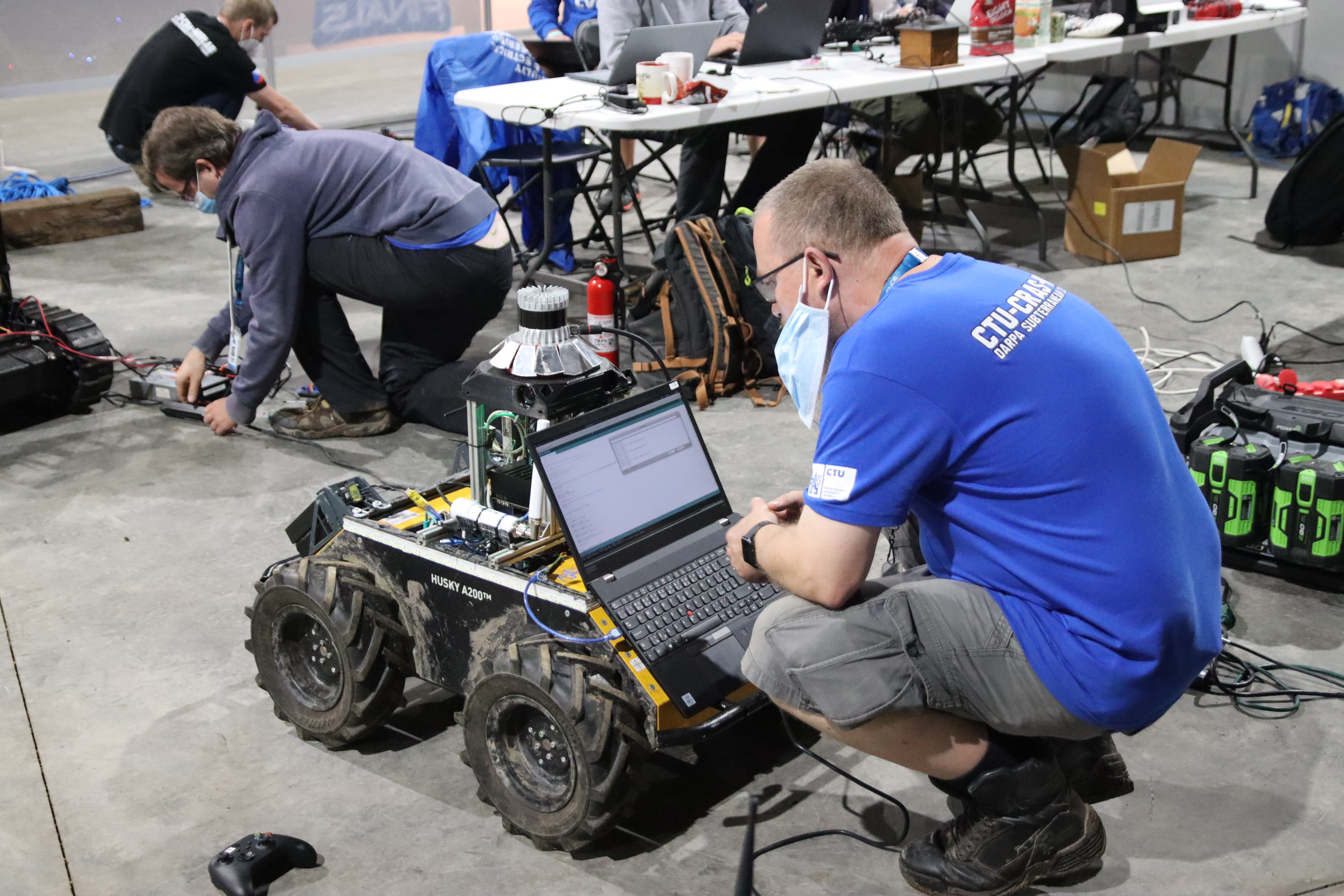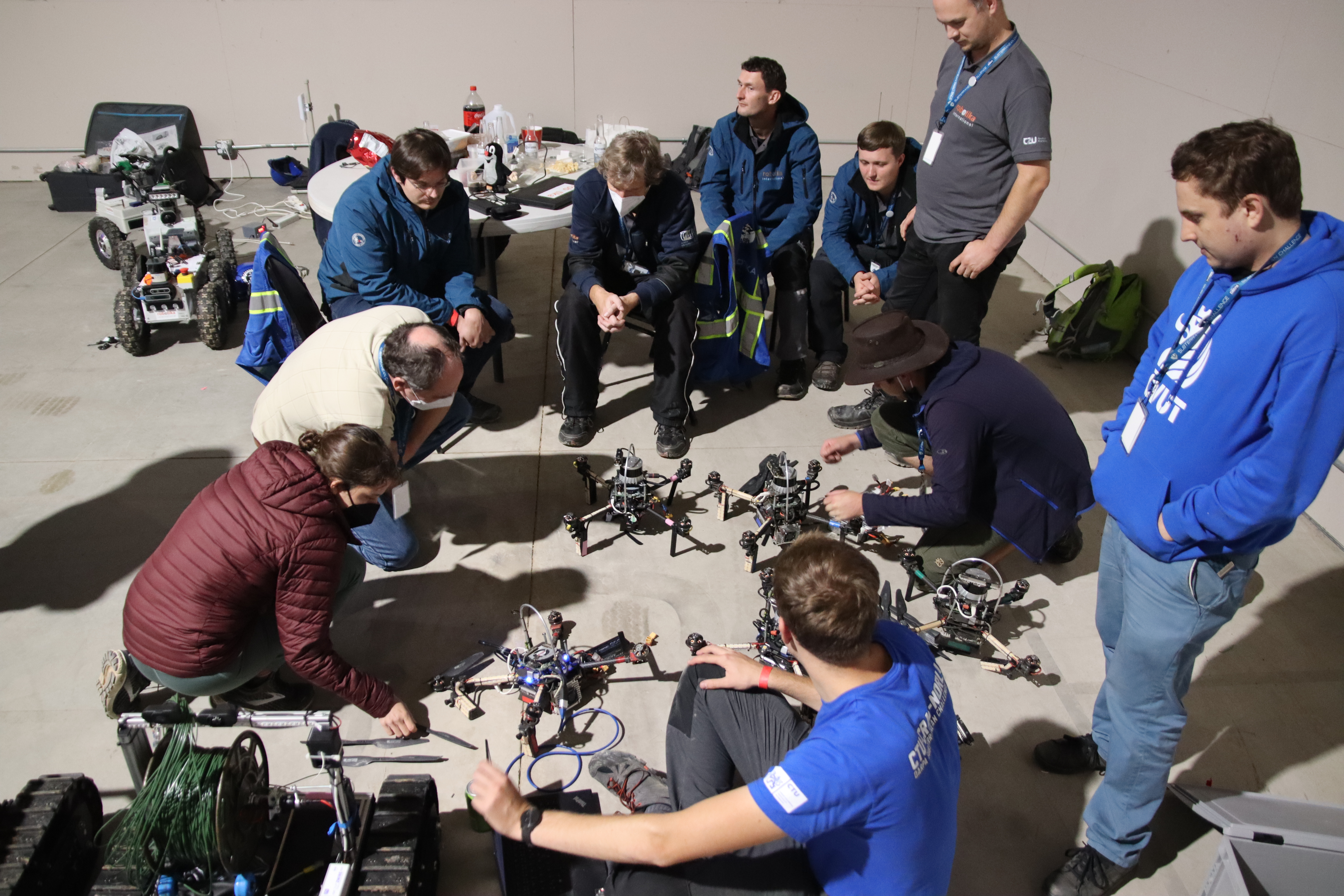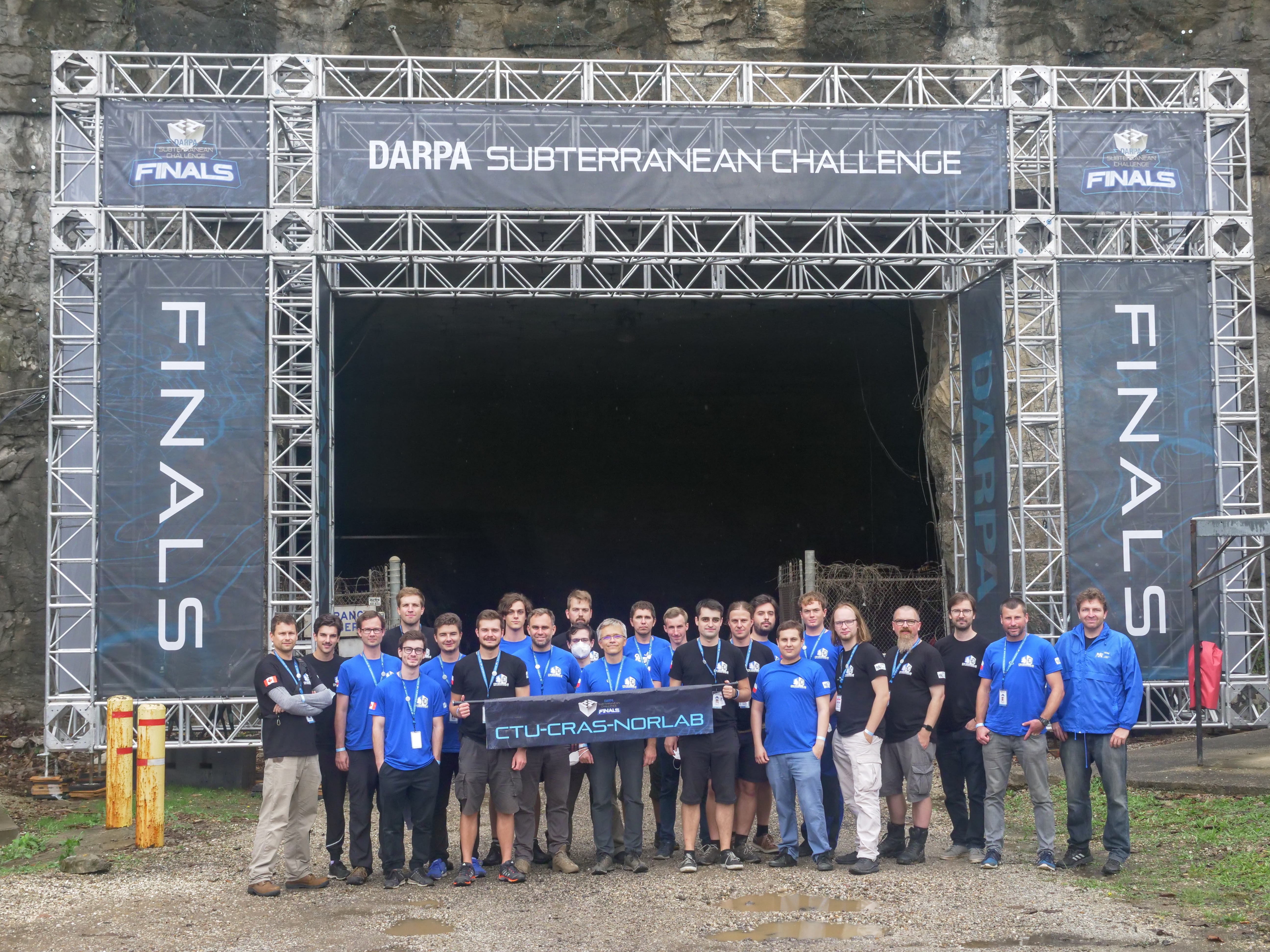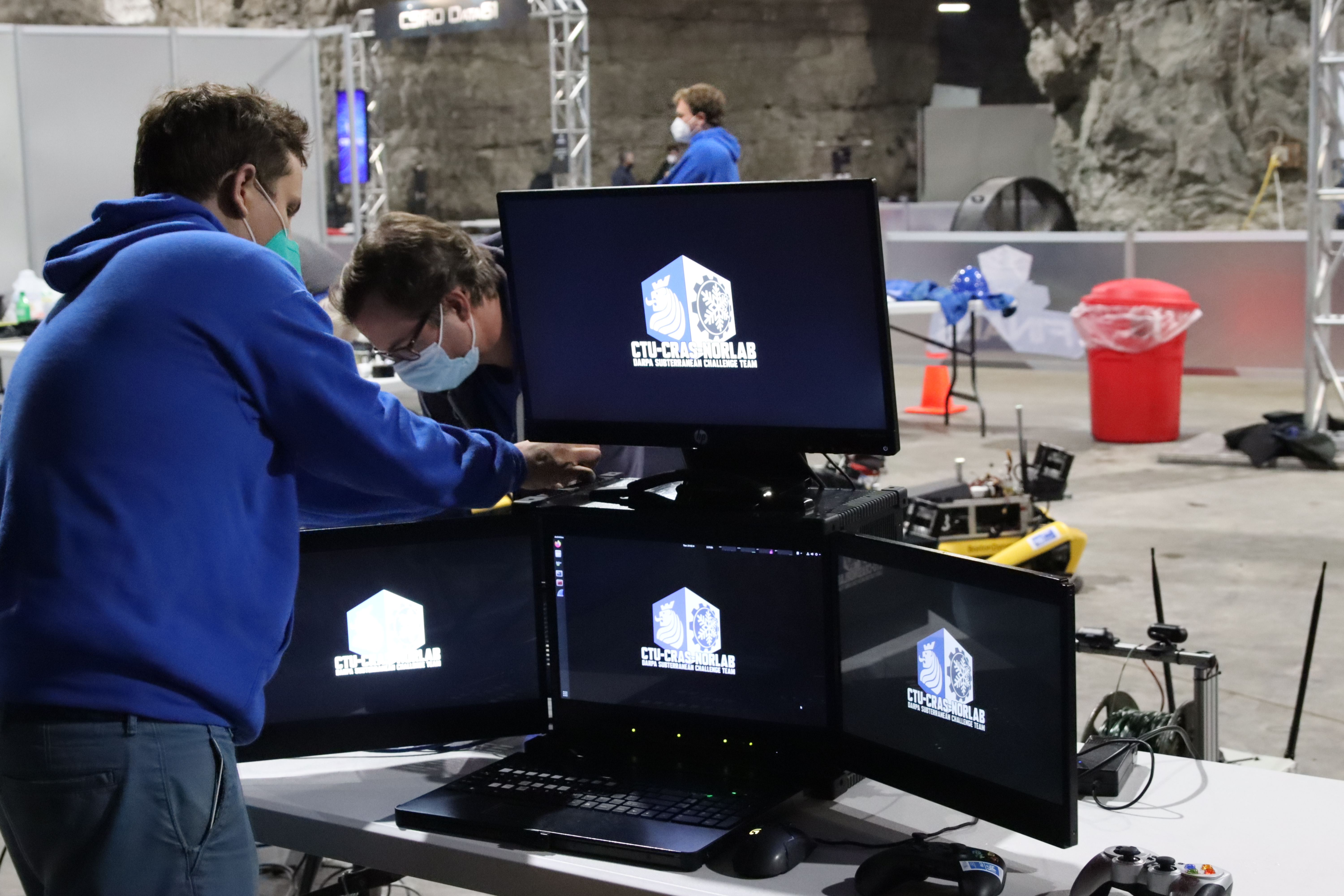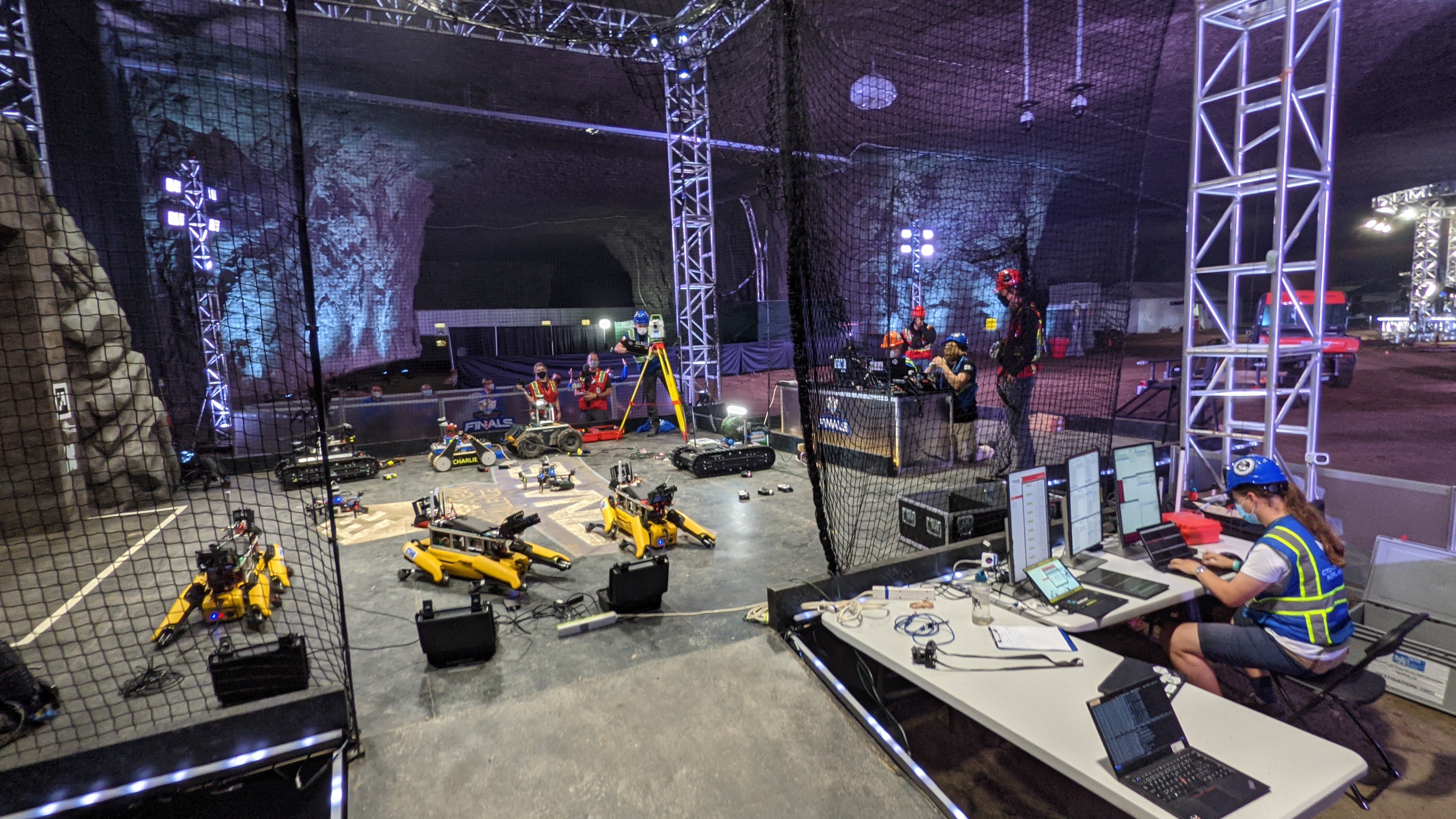DARPA SubT Challenge
Prepare the robots... Ready, set, GO! The finals of DARPA Subterranean Challenge, the "Olympics in robotics", are currently taking place in the USA. Competitors from around the world including CTU-CRAS-NORLAB team of FEE CTU scientists and students will meet on September 21-24, 2021 in the MegaCavern Underground Complex in Kentucky to compete for the main prize. The task is to send autonomous robots to a cave and identify as many objects as possible.
CTU-CRAS-NORLAB will defend the third place in the previous two rounds of SubT Challenge, in which we succeeded among the teams from prestigious research institutions (including NASA, MIT, CalTech, Oxford and ETH Zurich) as the best team without funding from the US Agency of the Ministry of Defense (DARPA). In addition, the chances of winning increased dramatically. How is that? Our fleet of wheeled, crawler, flying and six-legged robots has a new reinforcement in the form of a robotic dog called SPOT from Boston Dynamics. However, the decisive factor will be the extent to which the system of robots effectively exchanges information in an environment with lack of GPS signal where the range of wireless communication is very limited... Keep your fingers crossed for us as well as the robots!
DARPA day by day
Preparations ("Day 0")
We have been getting ready for and looking forward to the DARPA Subterranean “SubT” Challenge all year. Before flying off to the US, we tested our robots several times in a cave complex in the Moravian Karst, CZ, to prepare them for the real conditions in the DARPA venue.
In the US, we stay only a one hour drive from the FINALS venue where the SubT Challenge takes place. From Prague it was a long distance, but we traveled safely, maintaining all the anti-Covid restrictions. There were not many people at the airports, actually there were only nine of us at the US foreign citizens passport check. The robots arrived quickly and without any problems. We even managed to have one of the SPOT robots repaired in Boston and now it’s ready to re-join the team.
Preparations approach its climax, excitement increases. Tiredness haunts us too as we work late hours. However, there is actually a bright side - at night we can better simulate the real underground conditions of the SubT Challenge venue. Let’s see what the future brings, but for now we are in good spirits and eager to work.
Did you know that…?
… When shopping for 22 people you fill up the whole pick-up truck.
… Eating steaks every day is not so cool, you will become fed up.
… The SPOT robot is an amphibian. It went on its own to explore the nearby creek.
… From time to time even robots need to get surgery. Fortunately this time, it all went well and the patient is stabilized.
Day 1 - 21st Sept
Today we‘ve already visited the location of the final round of the competition, the huge Mega Cavern complex. It‘s a former underground limestone mine in Louisville, Kentucky, which extends below the highway and the local zoo. As of right now, it‘s used by companies for storage and other purposes. However, tourists are also welcome! They can ride the mining carts as part of a guided tour. And guides are truly needed in the caves! You can easily get lost here after the first few turns. It kind of resembles Moria from The Lord of the Rings...
Working areas for teams are very well prepared, with plenty of space, electricity and data connections with the outside world. At the same time, the teams are partially separated by opaque walls. At the entrance to the cave, there is a checkpoint where everyone’s temperature is measured every morning (contactless). Anti-covid measures including recommended distance from people are constantly emphasized. Face masks are required for the whole stay in the cave, even for the pit crew and the human operator during the mission. Which, given the high humidity, brings considerable difficulty, especially to the members of the team with glasses.
Day 2 - 22nd Sept
The team spirit is still very good despite the growing sleep deficit. But what about our contestants? The robots went through the technical inspection without any problems, they all stopped obediently when asked by a DARPA technician. In contrast to previous rounds, this security check takes place before each mission. The robots are doing fine, sometimes they don't want to get up, but so far they have always been convinced.
Testing and tuning took place until the last moment, which negatively affected the team's interplay at the start. We spent majority of the afternoon tuning the starting procedure after the first test half-hour mission. Although we didn‘t intentionally deploy all the robots, we tried each type. And successfully! All types of robots entered, or flew into the mission and found the artifacts. At the end of the exploration, one of the SPOTs returned peacefully to the start. The terrain is very difficult and cramped. The organizers basically built an environment into the cave corresponding to all three previous rounds of the competition and the condition is more demanding in all aspects.
Day 3 - 23rd Sept
Impressions from today's competition day are mixed. On the second test day we managed to deploy only some of the robots due to various technical difficulties. We worked hard to fix them, including replacing the 3D Lidar with a spare one at night. We also enlisted the services of Boston Dynamics representatives present on site to repair one of our Spots that had become ill. The work paid off.
Despite all the team's efforts in recent weeks and days, we were unable to fully make up for the delivery delays, and several system-wide preparatory tests couldn’t be carried out. In this, the other teams had the upper hand, they were better prepared. We still need to look closely at the data the robots collected during the competition mission and learn from them.
Day 4 - 24th Sept
During yesterday's competition round we managed to send a complete set of our robots to the cave. Six ground robots, three drones, plus a hand-controlled robot serving as a motorized base for mobile communication. The robots worked off-line, fully autonomously. That's definitely an achievement. On the other hand, some of the ground robots explored underground spaces in a way that was far from optimal. However, integration was successful, with robots of all types reporting the objects found.
The course of Friday's finals and the overall score of our team will be offered in the press release of FEE CTU issued after the FINALS end.
Summary
The DARPA Subterranean Challenge is over. We finished in 6th place in the deployment of real robots and 2nd in the virtual environment, which takes place in a robotic simulator. This was a nice surprise for us, because we focused primarily on the physical environment. Second place among the ten best robotic teams in the world brought us $ 500,000. And we also gained a set of very valuable data from the underground complex, which we will use in future research of robots themselves and multirobot systems.
Team members
The strong CTU-CRAS-NORLAB team consists of scientists and students from research groups of the Department of Cybernetics and the Department of Computer Science, FEE CTU.
Vision for Robotics and Autonomous Systems (VRAS)
Tomáš Svoboda - team leader
Karel Zimmermann
Vojtěch Šalanský
Teymur Azayev
Bedřich Himmel
Martin Pecka
Tomáš Petříček
Artificial Intelligence Center FEE CTU (AIC)
Multi-Robot Systems (MRS)
Martin Saska - team leader
Vít Krátký
Daniel Heřt
Pavel Petráček
Tomáš Báča
Matěj Petrlík
Tomáš Musil
Yurii Stasinchuk
Northern Robotics Laboratory (NORLAB)
François Pomerleau - team leader
Vladimír Kubelka
Maxime Vaidis
Olivier Gamache
Simon-Pierre Deschênes
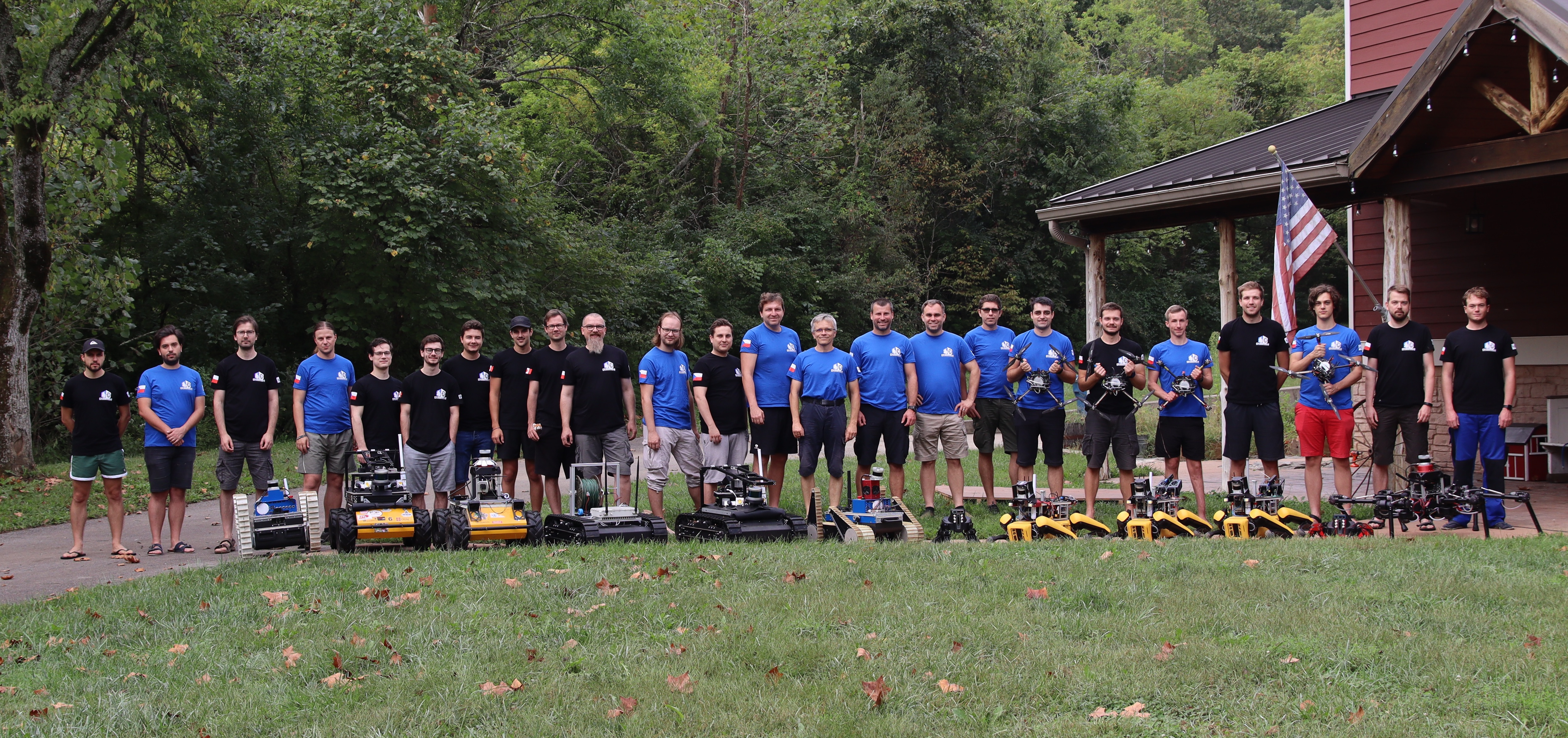
Photos from past years' SubT Challenges:
Feb 2020 - Urban Circuit
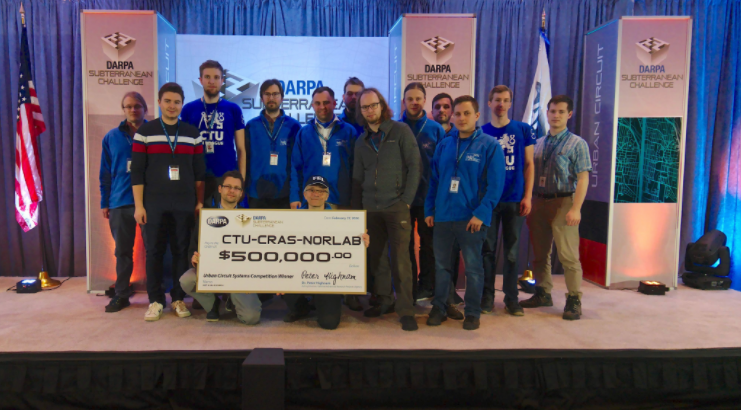
Sept 2019 - Tunnel Circuit
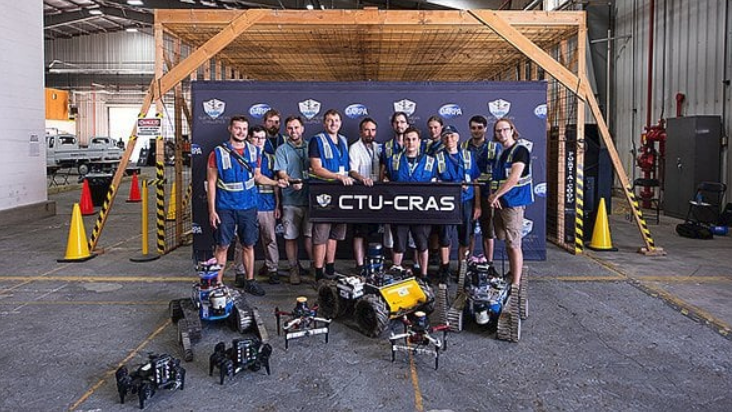
DARPA SubT Challenge
DARPA(Defense Advanced Research Projects Agency) is an American agency that helps develop breakthrough technologies in the field of security.
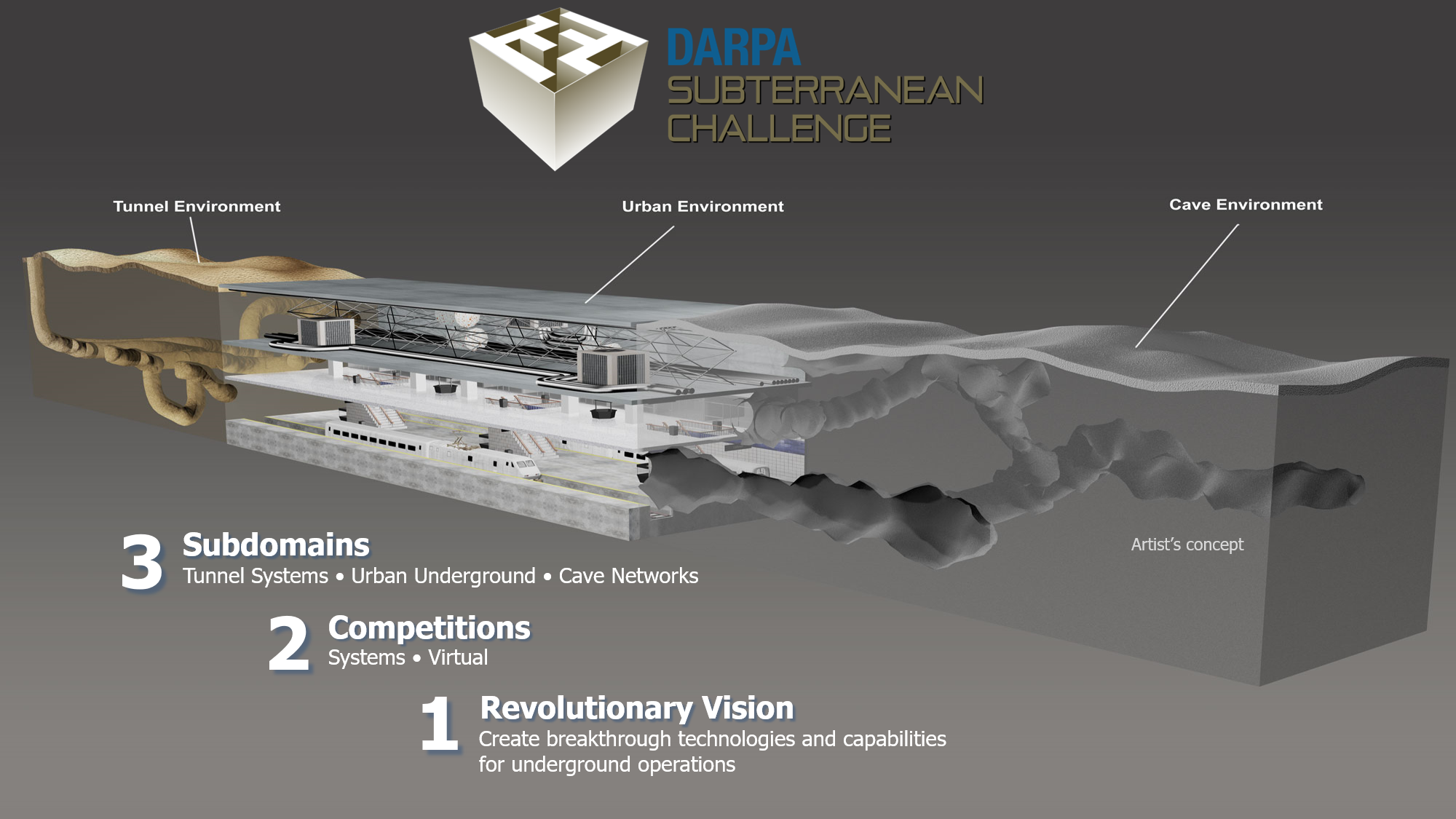
The goal of the DARPA SubT Challenge is to develop innovative technologies that can quickly map, navigate and search complex underground environments, such as man-made tunnel systems, urban underground and natural cave networks. Teams compete by demonstrating how their autonomy, connectivity, perception, and mobility skills perform either on physical courts in a Systems Competition or in simulated environments in a Virtual Competition.
In the last two years, the teams have faced a number of preliminary rounds - the Tunnel Circuit, the Urban Circuit and the Cave Circuit - to demonstrate how their solutions address the unique challenges of each sub-area. Teams will now face the challenges from all these three subdomains combined.
To participate in the competition, teams must deploy autonomous robotic systems (whether real or virtual) on the competition tracks to map, navigate and search for artifacts. The location of each artifact must be reported with an accuracy of at least five meters in order to score a point. The competition tracks are intentionally designed to mimic the dangers of rescue work in flooded mines, search and rescue missions after urban earthquakes, and cave rescue operations for injured or lost seekers.
The finals of the $ 2 million competition are held at the Louisville Mega Cavern in Kentucky.
For media
Please contact the FEE PR department:
Radovan Suk
pr@fel.cvut.cz
